Loading...

Issue 135
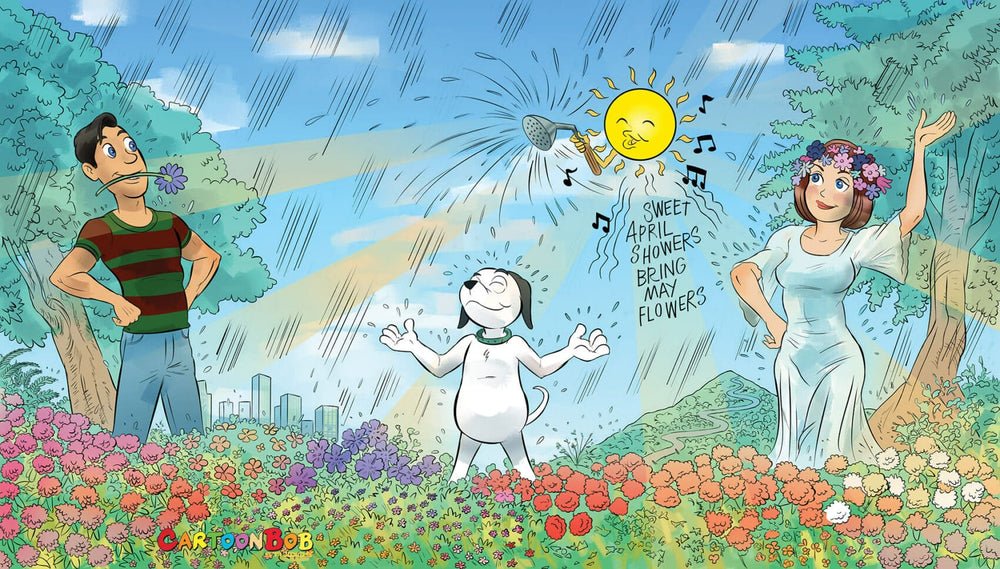
Moonlight Feels Right
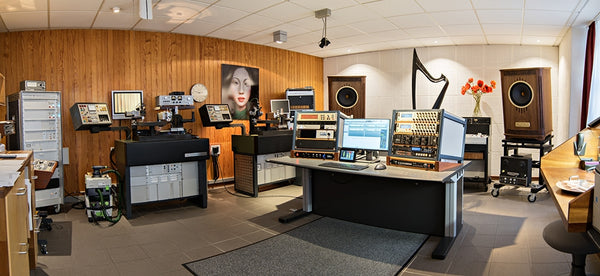
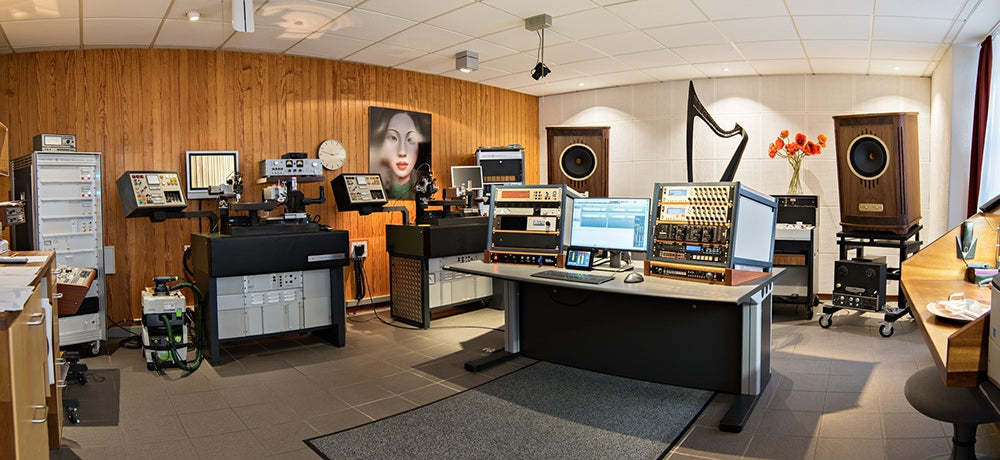
Copper Listens to Copper: Stockfisch Records’ DMM Dubplate Vol. 1
Stockfisch Records is an audiophile label established in Germany in 1974 by owner/producer/engineer/Günter Pauler. The label has been releasing recordings on vinyl, DSD, SACD, Blu-ray and other formats and their artist roster includes Werner Lämmerhirt, David Qualley, Sara K., Allan Taylor, Carrie Newcomer, Katja Werker and a number of others. They also offer their TTC-Pro True Transmission Cable speaker cable.
I’d known of Stockfisch, but nothing could have prepared me for the record I recently received: Stockfisch’s DMM Dubplate Vol. 1. The disc is made from copper-plated steel and has a literally dazzling copper surface. It comes in a beautifully-presented box with a detailed booklet – and a pair of white gloves for handling the disc. The box is specially-designed to keep the record as pristine as possible, with a foam surround and a silicone top plate that holds the record securely in the box. I have never seen anything else like it. The record is slightly larger in diameter than a standard vinyl disc and has some weight to it.

Stockfisch DMM Dubplate Vol. 1.
The idea behind DMM Dubplate Vol. 1 was, like conventional direct metal mastering (DMM), to remove a number of the steps involved in physically mastering and pressing standard vinyl records (the need to produce a mother, father and stamper), and eliminate the generational loss resulting from the multi-step process. Stockfisch takes the idea further – the DMM Dubplate Vol. 1 is the master: it’s directly cut from the mastering lathe!
DMM Dubplate Vol. 1 includes five tracks from Chris Jones, Carl Cleves & Parissa Bouas, Ewen Carruthers and Sara K. Only one side has music, because the back side is not plated so music can’t be cut into it.
Before going any further, I know what you’re thinking, the same thing I did: will this metal record damage my stylus?
According to Stockfisch, no, and more on that later. I will admit being a little hesitant in dropping the needle of my not-inexpensive Grado cartridge onto the surface.

At first, I thought I had forgotten to turn my phono stage on. I heard nothing but quiet – no groove noise, no pre-echo, no nothing. But, no, my system was working; it was just that the surface of this copper-clad disc was remarkably quiet. I moved the tonearm further into the record…
I was astounded by what I heard.
I’ve been listening to records since I was a baby. I’ve heard hundreds, thousands, including a good portion of the audiophile classics – Casino Royale, The Sheffield Track Record, Mobile Fidelity Ultradiscs, you name it. Still, I was floored by the purity, dynamic impact, tonal richness and the stunning presence of the music. The impact is immediate – you just know you’re hearing something special; let the analytical brain kick in later.
There is an intimacy and, well, directness to the sound that really is remarkable – and will take any seasoned audiophile about five seconds to hear. For example, on the first cut, Chris Jones “No Sanctuary Here,” the bass has real weight and harmonic richness, not just “bass extension.” His vocal is upfront and palpable, in the midst of a deep soundspace. When the acoustic guitar takes a solo, there’s a point where you can hear the “ping” of the string plucked against the fret, one of many moments of startling realism here
On Carl Cleves & Parissa Bouas’ “Into the Light,” the presence of her vocal is so full and lush that I almost laughed out loud. Can a dobro sound lush? Yes, it can. Chris Jones’ “Fender Bender” is a dazzling, virtuosic duet between acoustic guitar and electric bass, with instrumental accompaniment, and here, you really feel the pace and drive of the music, and the guitar and bass remain totally distinct from each other even at breakneck speed. The fourth cut, Ewen Carruthers’ “When the Time Comes Around,” is simply gorgeous; I felt like I could walk into the sound.
I went into listening to Dubplate Vol. 1 with the preconceived notion that because of the reduction of the steps in the record-pressing process (and the elimination of generation loss), that what I’d hear is more of the “audiophile” stuff – more detail and low-level resolution. While there’s plenty of that, along with a remarkable absence of noise, what struck me the most is the increase in the palpability of the vocals and instruments, of the weight, of the tangibility of the sound. Everything sounds incredibly present, more real, more convincing.
The fact that this was cut from digital is going to make many LP purists take pause. I can tell you, it’s made me re-think the whole record manufacturing thing. How much of the record-pressing process is responsible for which sonic aspects? I thought I knew. Maybe not. How many times can you say that listening to something has been a learning experience?
Sure, the price of Dubplate Vol. 1 isn’t cheap, but then again, I’m sure the cost of manufacturing isn’t either. (Full disclosure: I don’t know anyone at Stockfisch. I requested a disc because I was intrigued by the technology. I didn’t know what it cost until writing the review.) I’m happy that Stockfisch even did this, a boundary-pushing attempt at achieving better sound, the kind of bold effort that makes the pursuit of high-end audio so thrilling at times.
I asked Stockfisch’s Günter Pauler to provide us with more detail on the disc.

Günter Pauler: We [have] cut 14-inch DMM masters that are sent to pressing plants for the production of vinyl records. We listen to these DMM cuts every now and again, comparing them with the vinyl LPs that have been pressed from the DMM master. We observed that the sound quality of the pressed vinyl always fell disappointingly behind the original DMM master.
Thus we came up with the idea for a 12-inch Dubplate, which we thought might be interesting for companies that develop and produce pickups for record players, because with the Dubplate they would be able to evaluate the true performance of their products by avoiding the pitfalls of pressed vinyl. Unfortunately no pickup producer was interested in this possibility. But the reaction we received from high-end listeners was just the opposite.
The 12-inch Dubplate is cut one at a time, just like its 14-inch counterpart [record master] that is sent to a pressing plant. The copper blank is made of a 1mm-thick stainless steel disc, which then receives a 0.1mm-thick galvanic plating of phosphate-copper. The 14-inch blank discs are not exactly flat, but rather a bit concave and uneven, because the melding of two different metals creates tension on the disc.

Inés Breuer, Hendrik Pauler, Hans-Jörg Maucksch and Günter Pauler of Stockfisch Records.
On 14-inch blanks this imperfection does not negatively affect the cut, because the disc is pulled flat under vacuum on the Neumann VMS DMM [cutting] lathe. Our 12-inch Dubplate, however, has to lie flat on the turntable of a record player, where only a maximum of 0.6 mm vertical movement is allowed. For this reason, our 12” steel blanks are made flat by means of a roller press which applies several tons of pressure. Not only is this procedure expensive, but we still discard about 30 percent of the blanks as not suitable. That’s why we sell the DMM Dubplate for a relatively high price of 700 Euros. We can only produce about five Dubplates each week, as that’s about the number of good blanks we receive per week.
The music on Vol. 1 comes from a digital master. On our Neumann VMS-82 we have a digital preview delay made by Daniel Weiss that is capable of 96 kHz. We could just as well use an analog tape as source, but it [would] have to be converted to digital in order to work with our machine.

Neumann VMS-82 cutting lathe.
We have played back the DMM Dubplate around 200 times, using test tones such as pink noise. There was no hearable loss in sound and no measurable wear on the stylus. On a regular pressed vinyl there’s a considerable loss of high frequencies after just 50 plays.
The equipment used to create DMM Dubplate Vol. 1 includes the following:
- Neumann VMS-82 cutting lathe
- Neumann SAL-74B cutting amplifier
- Weiss DLY101 cutting delay and D/A converter
- Weiss EQ1 mastering equalizer
- Waves Audio MaxxBCL signal processor
- Merging Technologies HAPI audio interface
- Benchmark AHB2 power amplifier
- Tannoy Prestige Canterbury Gold Reference loudspeakers

Cutting engineer Hendrik Pauler at work.
|
Stockfisch-Records Am Münster 30a 37154 Northeim Germany Tel.: +49(0)5551 61313 Fax: +49(0)5551 8020 e-mail: info@stockfisch-records.de |
 |
Photos courtesy of Emre Meydan.
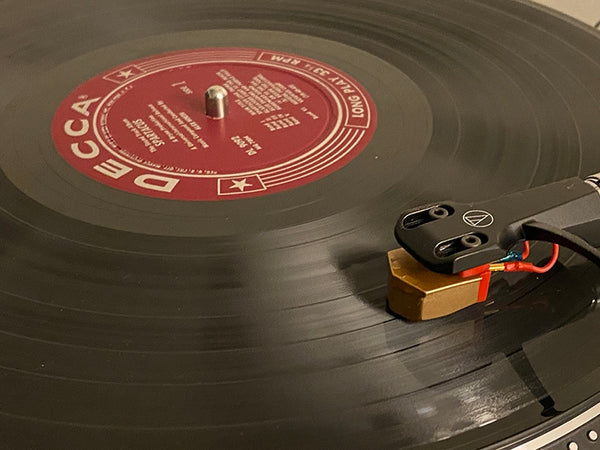
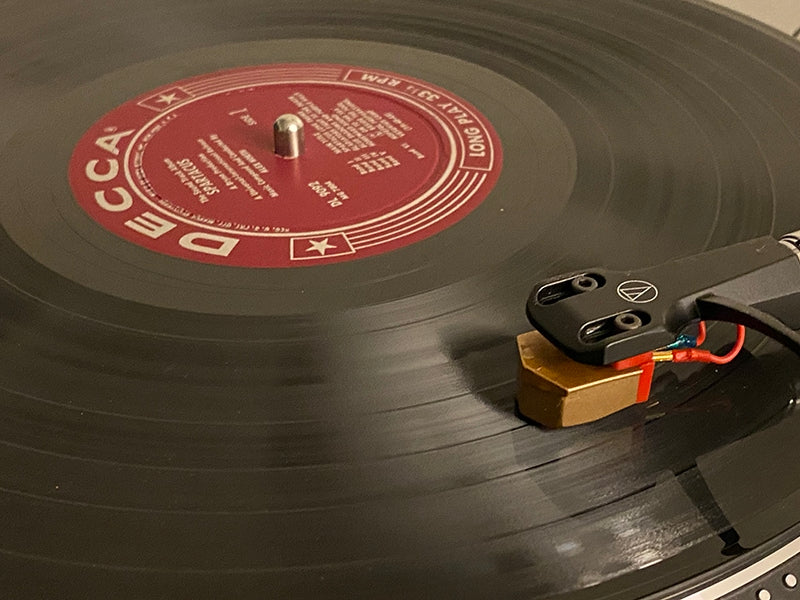
London “Decca” Cartridges: Unique Design, Timeless Quality
Decca cartridges are unique transducers with quite a bit of interesting history behind them, starring with the Decca company itself. From their 1929 beginnings as a British record company and gramophone (phonograph) manufacturer, the company later contributed to the 1940s war effort by developing radar and marine navigation systems. Decca produced records in both Europe and North America and quickly became the second-largest record label in the world, known for technical innovation and advanced recording techniques.
My vintage 1960 copy of the soundtrack album from Spartacus (the original, with Kirk Douglas) is a fine example of their work. The record is impeccable in every way, starting with the jacket and inner booklet. The vinyl record itself is quiet with outstanding dynamics that ebb and flow effortlessly, a lush, silken tonal quality, great soundstage depth, and fine detail with no etchiness in the sound whatsoever. (Decca Records is now part of the Universal Music Group.)

This is just a small bit of the colorful history of the Decca company, and if you find the subject interesting I suggest you read some of the many online articles about Decca. Even the origin of the Decca name may surprise you. It is the word “Mecca” with the initial “D” from their trademarked 1914 “Dulcetphone” replacing the M. It was also chosen because “Decca” was found to be easy to pronounce in most languages.

The Decca cartridge design is as interesting and unique as the company itself. It uses a “positive scanning system” generator design that is comprised of a piece of metal foil with the stylus mounted directly to it. This eliminates a conventional cantilever (and a sonic effect the company called “cantilever haze”) resulting in the shortest possible path from record to electrical signal. Along with the singular design and the sonic qualities of this cartridge, with its reputation for unrivaled musicality, also came a reputation for having many compromises, such as being unforgiving of dirty record and tracking abilities that fell well behind conventional moving magnet and moving coil designs.
Fast forward several decades and Decca is no longer in the business of manufacturing phono cartridges, the company having been sold in 1989. The cartridge design was licensed to Decca engineer John Wright, a license that is still in effect today. Now sold under the London brand name, “Decca” is often unofficially inserted into product description as the new manufacturer does not have the rights to use the Decca name. Referencing Decca makes the cartridge instantly recognizable to customers familiar with this unique transducer.
The latest London cartridges have been improved with a wider choice of styli and an improved mounting plate. All the cartridges, including the styli, are handmade in London to exacting standards, with the company being particularly proud of their stylus quality and the precise ways they are made and polished. The current London cartridge line-up is distributed by Pro Audio Ltd. of Tower Lakes, Illinois and is comprised of the following models:
Professional (DJ), $1,100
Maroon – Spherical, $950
Maroon DP*, $1,100
Gold – Elliptical, $1,200
Gold DP, $1,400
Super Gold – Line Contact Super, $1,500
Gold DP, $1,600
Jubilee – Line Contact, $3,000
Reference Low-Mass Fine Line, $5,000
*DP = Decapod
Any of the cartridges are available in mono or 78 RPM versions by special order. Re-tipping and servicing is available for all models as well.
As part of this feature I was loaned a London Super Gold cartridge to review and provide an update on a modern version of this classical, historically relevant piece of audio gear. I was most interested in seeing if the mythical status of the Decca cartridge was deserved, in both its positive and negative aspects. I used it with my Technics SL-1200GR feeding a Graham Slee Accession phono preamp. The Super Gold has a strong 5 mV output so no special phono preamp is required, and it tracks at 1.8 grams. The cartridge starts sounding its best after 30 hours of break-in so if you try the cartridge be sure to give it enough time to open up.

The legendary musicality is definitely not a myth. Whether it is the elimination of “cantilever haze,” the unique transducer itself or a combination of the two, there is something special to the sound that is different from other cartridges, analogous to the way that planar speakers are different from speakers with dynamic drivers. It made some of my $800 moving magnet and moving coil cartridges sound almost digital at times, and not good digital at that. Though the difference in price would certainly justify it in sounding so much better, as I mentioned before, there is a difference to the sound that is difficult to quantify.
There is an immediacy and clarity to the music that has to be experienced to be appreciated, along with tonal color and roundness I have never heard from any other musical component or transducer of any kind. Listening to the soundtrack from Breakfast at Tiffany’s featuring the music of Henry Mancini, the percussion had an immediacy and clarity I have never heard on that recording. The strumming at the beginning of “Moon River” had a richness and silken tonality that made took the listening experience to a new level.
The notion that the cartridge is intolerant of less-than-perfect vinyl also has some basis in reality. The qualities that make it so good at extracting music out of the groove make it somewhat unforgiving if your records are not well cared for. It is not unlistenable in these cases, but it seems to make imperfections come to the forefront a bit more than other fine cartridges I have used. If anything, the Decca Super Gold will encourage you to keep up your vinyl as pristine as possible. There is not much clearance between the stylus and the cartridge body so I recommend checking it frequently for dust build-up. The very fine stylus of the Super Gold managed to collect dust from records that were quiet and seemed clean, and if you have any accumulation it will degrade the sound more quickly than with other cartridges. Keep that stylus brush handy!
Tracking was not an issue whatsoever and the 1.8-gram tracking force handled everything I threw at it. I did find the set-up to be somewhat fussy, and if you have an arm with easily-adjustable VTA it will help you get the most out of the cartridge.
If you are looking for something to take your analog system to the next level and are willing to try something different, London Decca cartridges definitely belong on your shopping list. You will not only experience the distinctive and beautiful sound, you will also enjoy the pride that comes with owning something classic, unique and a part of audio history.
Manufacturer’s website:
http://londondeccaaudio.com/
US Distributor:
Pro Audio, Ltd.
111 N. South Dr.
Tower Lakes, IL 60010-1324
847-526-1660
Photos courtesy of Don Lindich.


Heart’s Ann Wilson: Wandering Through the Wonder
For a musical genre known to favor male vocalists, there are few men or women who have made the kind of impact that Ann Wilson has on rock n roll. As co-founder of the band Heart, she and her sister Nancy joined forces to deliver a sound that would shake the understanding of what we all thought was possible within the realm of rock. Together they wrote songs that were slightly dark, wet and raw, much like the climate of their native Seattle. Like the greats from that town who preceded them, they forged a path that quickly became impossible to ignore.
For those of us who grew up with their music, beginning with their 1975 debut, Dreamboat Annie, it wouldn’t be until later when we heard about the complicated relationships that existed within the band, and that likely informed their creative process. It didn’t matter. When a Heart classic emerged on a roadhouse jukebox we all found our way to our feet and we celebrated a rock and roll union that was honestly like no other. Heart was inducted into the Rock and Roll Hall of Fame in 2013.
The Wilson sisters have evolved their sound across genres and have kept their focus on bringing great energy to everything they do. Recently, Ann Wilson has been delivering new singles that tie back to Heart’s earliest recordings. They exhibit a raw, fuel-injected approach that perfectly syncs with her vocals in ways that will keep you wondering how she never seems to lose a step. It’s a prolific period for Ann, who just spent time at Muscle Shoals’ FAME Studios cutting new tracks and who is about to release a quartet of her earliest bands’ first recordings.
Ann Wilson is someone who never stopped believing that rock n roll could save your soul. In our recent exchange she proved that and more.
Ray Chelstowski: Gene Simmons and others have said that rock is dead. What do you think is the future for rock and roll?
Ann Wilson: I think that it’s incredibly short-sighted to say that rock is dead. I mean, that doesn’t pay any homage to history because many times over the decades (like in the disco era) people have said this, but rock has always kept on simmering underground, which is where it was born because it’s a revolutionary art form. The more flack that it gets the better it gets. I see the future of rock as being really bright. There are all of these performing bands that have been off the road for a year and a half and if you don’t think that they aren’t coiled up and ready to strike you’re crazy. There’s a lot of pent-up energy out there right now. So I think that rock is probably gonna come out swinging.
I also think it’s a mistake to mix up the world of rock performance and music with the Grammys and industry metrics like how many records you sell. I don’t think [it’s] right to equate commercial success with the life of the genre because the real thing about rock is its spirit and it’s “f*ck you-ness.” That’s not going to go away.
RC: Your latest singles: “Tender Heart,” “The Hammer,” and your Steve Earle cover, “The Revolution Starts Now” cover a lot of ground. What is the strategy behind what you are recording and releasing these days?
AW: They all represent things that are inside of me. I grew up as part of the Beatles generation where an album was more like a variety show. You just didn’t do one thing; you went to all kinds of places. That’s what’s happening with these songs. I just recorded four more down in Muscle Shoals that are like that too. I’m doing some more in about a month that are yet again different, so I’m exploring all corners of my creative self.
RC: What’s it like recording at Muscle Shoals where so many other big voices like Aretha Franklin, Etta James, and Wilson Pickett cut some of their best-known hits?
AW: Well Muscle Shoals has a soul of its own. I think I felt empathy for Aretha and Etta because they were young and shy when they were there but they delivered. That’s how I felt when I was there. I felt shy because I was in there with some players who were just beyond the beyond – real heavy hitters. I had to rise to the occasion and the studio was a really welcoming place to do that. It was also pretty cool to take a break and walk into the ladies restroom and see a picture of Aretha (laughs).
If you look at it scientifically, it just might be that the magic of Muscle Shoals comes from how the people who go in there believe that it’s magical so it is! The power of that belief can create reality.
RC: It took a while for you to release your solo debut, Hope and Glory in 2007, and then its follow-up, Immortal in 2018. Both were really well-received so why so much time between records?
AW: The first solo record came about because Nancy was married to Cameron Crowe at that point and she was scoring his movies. So, Heart was dormant and I was climbing the walls. So I made a solo album and it was really great. It helped me level up. Then when I got back together with Heart I was that much more ahead in terms of my self-confidence in what I could do. The same thing happened with Immortal, my second solo record. Then the stuff I did with the Ann Wilson Band (The Ann Wilson Thing!) had me doing my solo stuff alongside Heart material, which was just really nourishing for me as a singer. It was just great.
RC: You are also about to share some music you recorded in 1969 with your original band, Ann Wilson & The Daybreaks. What will fans discover in these songs?
AW: They have been a kind of whimsical funny thing from the early days, way before Heart, that my manager felt were valuable for the present. So we had them remastered so that they would sound their very best. It’s four songs (two singles sides). Three of them were country songs by local Seattle country songwriters who just needed a band to come and record their songs so that they could try to shop them around. There was one side left over and they let me fill it any way that I wanted. It just so happened that Nancy and I at that time had written our first song together called “Through Eyes and Glass.” So we actually recorded that one. It was when I was at art college so I was probably eighteen and I was going to school by day and singing in a band at night.
RC: How do you think the music will be received?
AW: To my ears now is sounds super old-timey. It’s got this reverb all over it and it’s totally country. The guys that were playing in my band were stock musicians; just old workhorse guys, so there’s a real everyman quality to their sound. And of course I sound like I’m about twelve (laughs). I had no studio experience before that so I sound kind of scared. Kind of reckless and naive!
RC: I re-watched Heart – Behind The Music, and maybe for the first time really saw the symmetry that exists between your 1970s sound and what emerged from Seattle in the early 1990’s. What is it about that town that informs the creative process?
AW: Well the thing about Seattle is that for nine months out of the year it’s overcast, dreary, drizzly, and cold – that kind of worms its way into everyone’s mood. People are introspective, and while they may try real hard to be chipper and ironic they don’t ever completely make it. So that’s where I think the earlier music like Jimi Hendrix and Ray Charles, to Heart, and then later on to the bands of the ’90s, creates a stream that reflects what the atmosphere and climate are like. It’s what people’s emotional landscapes in Seattle tend to be like.
RC: Your music in the 1980s didn’t have that kind of coloring.
AW: That’s when we left town to work in other studios and places. We had been listening to record companies who said, “Oh no, don’t do your songs. That’s not what’s being played on the radio. Do this instead.“ We made a Faustian bargain and had super commercial success. But it really wasn’t us. It was like putting on a suit of clothes that really didn’t fit. It was super sexy so people bought it, but we didn’t. It was uncomfortable. So we went back to Seattle and decided to do The Lovemongers. We’ll dry out here and rediscover ourselves. So yeah, Seattle is a spiritual home.
RC: I’m always amazed at how much musical ground the band Heart has covered. Is that a reflection of the kind of musical household that you grew up in, listening to everything from classical to Judy Garland?
AW: Oh yeah. The radio was always on and there was always an album playing – somebody’s music was always on. So it’s no big deal to just thumb through my encyclopedic memory of songs throughout my life and just bring them out.
RC: Your new material finds you in great voice. What is your secret to keeping your vocals in such remarkable shape?
AW: I don’t think there’s any secret. Your voice is just a tunnel that your soul passes through when you sing. If you practice just normal horse sense as you would with any other part of your body, your throat’s going to agree with whatever you want to put through it. But I do a couple of things like taking massive doses of Arnica when I’m on the road. That helps with the swelling and bruising that comes from singing rock for two hours straight – which is kind of like being in a football game.
RC: Jimmy Page famously toured with the Black Crowes, revisiting Led Zeppelin’s music. Have you ever thought about fronting a “guy band” and heading out on tour together?
AW: Yes I have. I would love to front Soundgarden! I would love to also front a band with Jimmy (Page) and John Paul (Jones) and somebody playing drums. If the band was digging what I do and open minded I’d totally do it.
RC: Have you ever considered taking one of your classic albums on the road and building a tour around it like Bruce Springsteen did with The River?
AW: Yeah; one year we did Dreamboat Annie. We didn’t do it on a tour though. I think that would be really fun. We are hard-pressed though to find an album that I think is brilliant all of the way through, where every song is just great! You know, like what Lucinda Williams could do with Car Wheels on a Gravel Road because that album is just a masterpiece. If you’re going to do a concert and expect people to sit there and just dig it, then every song has to be up to a certain standard. But probably something like Little Queen could do that.
RC: After the new material is all released, what’s next? Is there anyone you are looking to collaborate with?
AW: In June I have four shows scheduled in Florida with my new band. After that hopefully we’ll be able to go back on the road and actually tour. No one can say how that’s going to actually happen but it will because there are too many people who want it.
In terms of collaborations I think that you do one thing and it opens up other doors. It’s more like wandering through all of this wonder and figuring out where to go next.

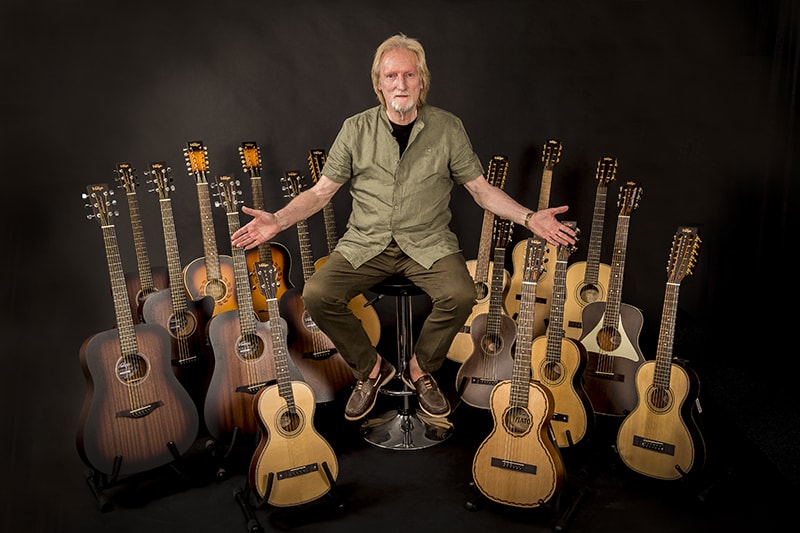
Paul Brett: Guitarist, Designer and Collector of Rare Instruments
Paul Brett is a renowned guitarist, performer and recording artist. He’s also an instrument historian and designer, a journalist, and a collector. Paul has played with the Strawbs, the Crazy World of Arthur Brown, Roy Harper, the “King of Skiffle” Lonnie Donegan and others, and here he shares some of his musical highlights spanning the decades.
Russ Welton: What is your favorite instrument from your collection?
Paul Brett: Funnily enough, it’s not a guitar! A couple of years ago I acquired an excessively rare Irish traveling harp made by the legendary John Egan. I can’t play harp but as a collector, I couldn’t resist getting it as there are very few about and none I can find outside of museums. There is something magical about it and it looks great. It was sold as part of a household clearance and the seller was after antique furniture. They did not know who the harp actually was made by, so I picked up a bargain!

Guitar-wise, I have a couple of early 1800s harp guitars by English luthier Edward Light. These were the forerunner of the harp guitar as we know it today. Its big brother emerged in the early 1900s. My 1916 Gibson Style U harp guitar is a museum-quality example and recently won first prize in the Britain’s Rare Guitars Show.
Apart from these, my favorite actual guitars in my collection are a Lead Belly-size 1930s Oscar Schmidt Stella 12-string, and a 1938 Stella Westbrook 12-string played by the legendary Blind Willie McTell. I am also in love with my self-designed Vintage Viator 12-string. I have just completed an original 15-track album using it with a string quartet.

RW: Which acoustic instruments have you found to be significant milestones in the development of the guitar itself, and in your own playing?
PB: To define the beginning of the guitar is impossible. 3,500 years ago, a tomb was discovered in Egypt containing the mummified corpse of a musician named Har Mose. He was clutching a three-stringed tanbur with a wooden pick attached. It looked like a paddle or cricket bat but was obviously playable. It is currently residing in the Museum of Egyptian Antiquities in Cairo. So, if we take this as a start, a three stringed instrument with a pick, then we can progress the development from there. We can thank the Moors for bringing the oud into southern Spain, from which all hell broke loose regarding its morphing into the guitar and its various guises throughout the ages. It would take a very large book to list all the manifestations and styles of the guitar’s rise through the centuries and we haven’t got the space here to cover it.
Throughout my career as a guitarist, I have never limited myself to one style or genre of playing. I always learned the many different aspects of what that piece of wood and metal was capable of, and I still do today.
RW: Who would you say have been the most popular voices in the development of pop music during your career, and how so?
PB: If your question refers to modern popular music, then you would have to mention Bill Haley, Elvis Presley and other greats from that 1950s birthing era. I would include someone who I had the pleasure of playing lead guitar with, Lonnie Donegan. Without Lon’s input in the UK, certainly British popular music would not have taken the path it did (he was Britain’s biggest artist before the Beatles), I was influenced by many players and artists. In the early days, Duane Eddy, The Shadows, Charlie Byrd, Segovia, Wes Montgomery, even jazz sax players like Ben Webster.
I would have to say the standout artists who have influenced my career, especially in the formation of Paul Brett’s Sage, have to be Ritchie Havens and to a lesser extent, Crosby, Stills, Nash and Young, insofar as the use of vocal harmonies were concerned.
RW: What inspired your own development of your own line of guitars through guitar company Vintage?
PB: When I was playing with 12-string blues legend Johnny Joyce in the ’60s and ’70s in various line ups, I caught the bug from him regarding the makes and models of guitars the blues legends played. These were not top-of-the-range name brands, but many fell under one brand, Stella. These were made in New York City by a German immigrant, Oscar Schmidt, who set up a factory there. From 1939, they were made by Harmony. They were considered “workingman’s guitars” as they were cheap. Many were made of birch and ladder-braced in construction. (This is an earlier way of reinforcing the top of a guitar, as opposed to the “X” bracing and other types used today.) Back in the 60’s in the UK, it was almost impossible to find one of these Stellas.

We only heard these early Stellas on crude recordings of American blues pioneers like Leadbelly, Blind Willie McTell, Blind Lemon Jefferson, Son House and others. So, we trawled the junk shops and found some, which Johnny repaired, and we were caught in their spell, as they produced what is now referred to as “That Sound,” especially for blues. From that time till now, I have made it my mission to collect, record and film as many of these early iconic guitars as I can. This was the main influence of my guitar designs for Vintage.
RW: How do you decide on which instruments to develop for Vintage?
PB: I look at gaps in the market. I use my collection of old guitars as references, and come up with design ideas and present them to operations director Paul Smith at Vintage, who then seeks the go-ahead to put them into production from managing director Dennis Drumm. If approved, we send the designs to be made.
At Vintage, we are always conscious of keeping the quality up and prices down. Hence, we have adopted the old principle of workingman’s (and woman’s) guitars that are affordable and offer great value for money.

RW: You have 20 Paul Brett Signature models in the Vintage range. How would you advise new players on choosing which ones to play?
PB: Just look at the range of acoustics and acoustic-electrics. See which one might fit the bill for what you are looking to achieve and if possible, try one out. I have uploaded lots of videos to YouTube of all my Vintage range, plus loads of early Stellas and many other brands that were popular in earlier times. So, you can see and hear them being played and not just see ads and photos of them.
RW: Which instruments does Phil Beer of Show of Hands play?
PB: Phil is one of our best all-round players. He endorses and plays the Viator travel guitars, both the 6- and 12-string models. He has posted videos of him playing these models in a different style to what I play, showing the versatility of these little powerhouses. Gordon Giltrap, Steve Tilston, Carrie Martin and others also play Viators.
RW: Toby Lobb of the UK shanty group Fisherman’s Friends plays your guitars. Tell us about that.
PB: Toby uses my instruments on the group’s records and videos, and his solo CDs. I am happy he has chosen to play my guitars and it spreads them to another genre. They are the leading group in that genre in the UK and one of my favorite live bands. One of the most enjoyable concerts I have been to prior to lockdown. No hype, just good old sea shanties delivered by genuine people who know how to present their art in live performance.
RW: You have a new album coming out and it’s a compilation on Cherry Red Records, who have released artists and records like the debut Genesis album (From Genesis to Revelation), Toyah, Sir Lord Baltimore, Hawkwind and others. Tell us about your album.
PB: I was approached by John Reed of Cherry Red Records to sign up my catalogue. Once we had made the deal, John suggested putting out a 4-CD anthology that represents a selection of my recorded works from the 1960s until now. It was released on March 29.
I am very pleased as I did not realize I had done so much over the years. It’s only when I sat and listened to 94 tracks across 50-plus years of recording that I took in the variety of styles and genres and the bands and musicians I had played with over the years. Here is the link if anyone wants to get a copy:

RW: You will soon be making an appearance on Netflix. Tell us about your involvement.
PB: Dennis Drumm of Vintage was approached by an American production company to make a film about vintage guitars for Netflix. The producer requested that I take part and show some of my instruments. This will be happening imminently.
RW: What future projects can you tell us about?
PB: I am currently liaising with a TV production company to make a six-part TV series based on the “History of Guitar” series of articles I wrote for Acoustic magazine. Vintage and I are also in the process of designing a tribute 12-string in memory of Johnny Joyce.
For more information about Paul please visit:

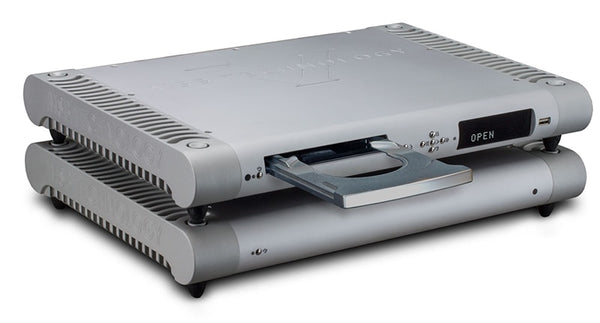
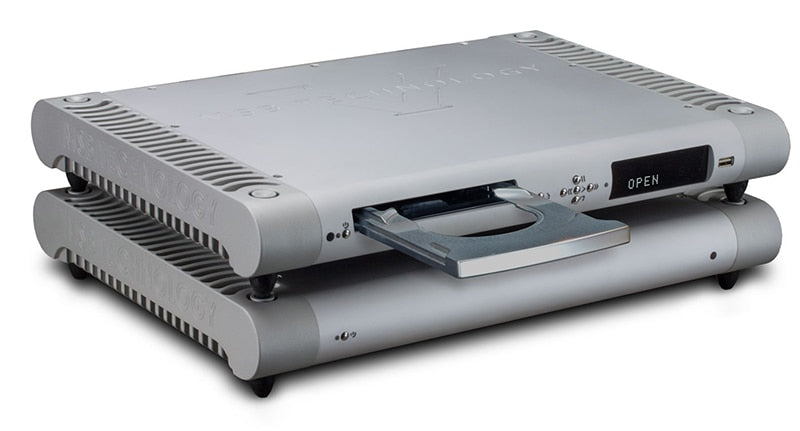
Down the Rabbit Hole of SACD Ripping and DSD Extraction

I’m a firm believer in fair use when it comes to audio media — if you bought it, you own it, and you’re free to do with it as you please — as long as it’s for your personal enjoyment and you’re not trying to sell it illegally for profit. Apparently the code writers/hackers in the world agree with me, and it’s really great that we can finally transcode just about any digital file type that exists to ensure compatibility with ever-evolving audio equipment. I’m departing from my usual review format to focus on a developing technology I’ve been following for several years now, which is the ripping of SACD discs and the extraction of the Direct Stream Digital (DSD) layer. I first became aware of this about three years ago, and have followed its progress with great interest, although I haven’t had the tools available to me to make this happen until just a few weeks ago. Why a nearly-dead, niche technology like SACD, you may ask — my involvement with it goes all the way back to my very first gig in audio journalism, twenty years ago at the old Audiophile Audition website.
I wrote my first piece for Audiophile Audition in 2001; the SACD format had been unceremoniously launched the year before to very little fanfare. SACD offered great promise, with many technological positives; the only real downside being the somewhat prohibitive cost of the discs and players. In the year following SACD’s release, John Sunier (the now-deceased editor at AA), offered me what would prove to be a ridiculously generous and nearly unlimited flow of SACD discs from all the major record labels. I also received discs from a multitude of smaller labels who were eager to jump on board the SACD bandwagon — and I didn’t even have an SACD player at the time. Fortunately, manufacturers and record company reps were keen to get information about the new technology out there, and were very accommodating when it came to getting hardware into the hands of reviewers.
My experience with SACD was that its playback was revelatory; no other digital disc could come close to providing the level of clarity, organic purity, and very nearly analog-like sound quality. By the time the major labels pulled the plug on the format in 2009, I had amassed a collection of over 300 titles. And I’ve added more in the decade since then, bringing me to a total of about 400 discs. I don’t play them as much as I’d like, because I’ve pretty much become a slave to the convenience of streaming digital music. I’ve purchased a number of high-res downloads — including some DSD downloads (about a dozen). However, the cost is prohibitive, so I haven’t gone all-in with DSD downloads. But having so many SACD discs on hand, I’ve always dreamed about being able to add those to my digital music library for convenient playback.
The first time I read anything online about being able to rip an SACD, it involved what appeared to be a mega-complicated process of exacting procedures, requiring very specific, no-longer-in-production equipment with very limited availability. At that point, this was limited to certain Oppo universal players and early Sony PlayStation models. And if the firmware on any of those units had been updated beyond a certain point, they would no longer perform the process, which was fairly long and involved, and apparently placed a significant strain on the lasers of the units being used for ripping. You’d read lots of threads with people literally pulling their hair out over failed ripping attempts, or over finally locating a correct Oppo or PlayStation unit, only to find that they’d been run to death ripping SACDs. Becoming an SACD-ripping early-adopter didn’t appear to be in the cards for me.

I pretty much had given up on it until about a year ago, when I stumbled onto a thread linked to the Sonore (manufacturer of Rendu streamers and associated equipment) website that referenced a program called ISO2DSD. Googling that eventually led me to the HiFi Haven website, where there’s an entire thread dedicated to ripping SACDs. Which is a tad daunting, because the thread has 140 pages of comments that range from relatively cryptic tidbits of absolutely essential information, to full blown rants detailing chaotic failures at the process. I waded through a mountain of detailed information for seemingly countless hours — even days — and eventually picked up some essential clues on how to make the process actually work. I’d recommend going ahead and registering for the site — like I did, you may find yourself occasionally stuck in the process, and have a need to reach out to anyone who might be able to provide some guidance or perhaps a clarification.
The process of ripping SACDs has gotten significantly easier over the last couple of years. I guess there are folks out there with lots of time on their hands, the ability to write sophisticated programs that have seriously simplified the process, and the time to test a ridiculous variety of players to confirm whether they will actually work with the programs. The very first step can be found on the HiFi Haven website, on page 1 of the thread, midway down the page, where there’s a comprehensive listing of player models that will work for SACD ripping. These are all currently Blu-ray players (that support SACD playback) that incorporate a MediaTek chipset that’s needed to make ripping possible. The MediaTek chipset was introduced in 2010, and was commonly used in the players listed below from 2012 through 2017. That list currently includes:
Sony brand compatible Blu-ray players:
BDP-S390 (also sold as BX39 in some markets)
BDP-S490
BDP-S590 (also sold as BX59 in some markets)
BDV-E190
BDP-S4100
BDP-S5100 (also sold as BX510 in some markets)
BDP-S6200* (also sold as BX620 in some markets, requires Sony ARMv7 AutoScript sacd_extract_6200 version)
BDP-S7200* (requires Sony ARMv7 AutoScript sacd_extract_6200 version)
BDP-S790* (requires Sony ARMv7 AutoScript version/S790 variant)
BDP-A6000* (requires Sony ARMv7 AutoScript sacd_extract_6200 version)
BDV-NF720 (requires Sony ARMv7 AutoScript sacd_extract_6200 version)
BDP-S6500* (also sold as BX650 in some markets, requires Sony ARMv7 AutoScript version/S6700 variant developed June 2020)
BDP-S6700 (not recommended, only certain early production is compatible)
UHP-H1 (requires Sony ARMv7 AutoScript version/S6700 variant developed Jun. 2020)
Pioneer brand compatible Blu-ray players:
BDP-80FD
BDP-160
BDP-170
MCS-FS232 * (requires Sony ARMv7 AutoScript version S6200/7200 variant)
Oppo brand compatible Blu-ray players:
BDP-103 and 103D
BDP-105 and 105D
Cambridge brand compatible Blu-ray players:
Azur 752BD
CXU
Arcam brand compatible Blu-ray & CD/SACD players:
FMJ UDP411
FMJ CDS27
Primare brand compatible Blu-ray player:
BD32 MkII
Electrocompaniet brand compatible Blu-ray player:
EMP3
Denon brand compatible Blu-ray player:
DBT-3313UD and 3313UDCI* (requires Sony ARMv7 AutoScript version/S790 variant)
MSB Technology brand compatible Blu-ray players:
Universal Media Transport V
Signature UMT V
Yamaha brand compatible Blu-ray Player:
BD-S677
Marantz brand compatible Blu-ray player:
UD7007* (requires Sony ARMv7 AutoScript version/S790 variant)
I’m pretty certain few (if any) of the player models listed are in current production, and some of the Sony models sold for less than $100 USD when brand new at stores like Target, Costco, and WalMart. A number of them can be found online at sites like eBay for around $50 or less, and numerous posters have detailed finding one of the player models at thrift stores like Goodwill. I bookmarked the model listing page on my cell phone and started a casual search for one of the players; I often frequent thrift stores looking for cheap CDs, and virtually every one I go into regularly has a half-dozen or so Blu-ray players priced anywhere from $10 to $20. From all accounts on the HiFi Haven SACD ripping thread, one of the players that’s most commonly available and used for ripping is the Sony BDP-S5100 (also sold as BX510 in some markets). I decided to forego the online search for one of the players, choosing instead to trust dumb luck in finding a functioning unit in a thrift store.

My frequent thrift store searches were unsuccessful over a period of about a year, until a couple of weeks ago, when I found a very clean Sony BX510 player at a Goodwill for $11. Woo hoo! I have a personal theory that a lot of disc players donated to Goodwills and the like were probably only used for DVD or Blu-ray playback, and probably not subjected to extreme usage or abuse, meaning that the SACD drive function is more than likely pretty pristine. The BX510 I scored came without a remote; being able to access the player’s setup menu is essential to getting the ripping process to properly function. Luckily, I happened to have a newer model Sony Blu-ray player (purchased at WalMart for about $50) in my living room, and its remote worked perfectly with the BX510. Barring all else, working remotes can be gotten from Amazon for less than $10.

You’ll need to connect the player to a monitor or TV, and you’ll need the remote to make a few basic settings on the player’s on-screen setup menu. 1) Go to the Audio Settings tab, and turn the DSD Output Mode to “Off.” 2) Then go to the BD/DVD Viewing Settings tab and set the BD Internet Connection to “Do Not Allow.” 3) Go to the Music Settings tab and set the Super Audio CD Playback Layer to “SACD.” 4) Go to the System Settings tab and set the Quick Start Mode to “On.” I also set the System Software Auto Update to “Off,” even though the current conventional logic is that it’s no longer critical to the machine’s ability to rip SACDs. 5) Finally, you’ll need to go to the Network Settings tab and choose between “Wired” or “Wireless” — once again, the original thought process with SACD ripping was that wireless wasn’t feasible because of the huge data transfer going on, but recent experiences have shown that not to be the case. I’ve actually had good success with a wireless connection, so whichever path you choose should work for you.
Okay, so now that you have your player set up, there are a couple of other considerations that need to be made. First of all, you need to download the latest version of JavaOS for your computer’s OS; the ripping program is based on Java, and requires a minimum of Java Version 8 to function properly. Most computers use Java to assist or manage a variety of functions, but you do need to confirm that you at least have Java Version 8 running.
 The biggest advance in SACD ripping came with the introduction of the SACD Extract GUI software in 2018. The software will work in Windows, Mac, or Linux environments; when you click on the link, it takes you to page 15 on the HiFi Haven SACD ripping page. In the post, you’ll see two buttons marked “Spoiler: AMD/Intel” and “Spoiler: Raspberry PI”; click on the one that pertains to your computer system processor setup, and opening them will reveal the download links that match your OS. Download the .zip file, extract it, and place it not buried too deeply on your system hard drive; for example, if using a Mac, place it in the Application folder. With Windows, place the file somewhere on your “C” drive, like in the Program Files folder.
The biggest advance in SACD ripping came with the introduction of the SACD Extract GUI software in 2018. The software will work in Windows, Mac, or Linux environments; when you click on the link, it takes you to page 15 on the HiFi Haven SACD ripping page. In the post, you’ll see two buttons marked “Spoiler: AMD/Intel” and “Spoiler: Raspberry PI”; click on the one that pertains to your computer system processor setup, and opening them will reveal the download links that match your OS. Download the .zip file, extract it, and place it not buried too deeply on your system hard drive; for example, if using a Mac, place it in the Application folder. With Windows, place the file somewhere on your “C” drive, like in the Program Files folder. 
 The download package includes a number of files, but only two require any attention from you; the one named “SACDExtractGUI” is the actual application and visual interface that you launch every time you rip an SACD. The second file you need to be concerned with is one that’s named “SACD_Extract”; this is an executable program that governs the ripping process on your computer. No installation is necessary of any of the executable (.exe) files; they automatically run when the program is launched. All the software here is open source, which means that many developers are making regular improvements; one just happened recently that has fixed some problem issues I had with certain discs not ripping. This tends to be a problem most often with classical SACDs, where the metadata character string for a particular file exceeds 256 characters — it happens a lot more often than you might imagine, and the ripping software originally couldn’t process files that exceeded that limitation. Fortunately, there’s a fix; go to page 142 of the HiFi Haven thread; midway down, click on the link EuFlo’s GitHub repository, and scroll down to the bottom of the page. Choose the -99 link that matches your operating system. Extract the files, then delete the “SACD_Extract” file from your existing software folder and replace it with the new one you just downloaded. So far, everything I’ve ripped has worked perfectly with the new executable file.
The download package includes a number of files, but only two require any attention from you; the one named “SACDExtractGUI” is the actual application and visual interface that you launch every time you rip an SACD. The second file you need to be concerned with is one that’s named “SACD_Extract”; this is an executable program that governs the ripping process on your computer. No installation is necessary of any of the executable (.exe) files; they automatically run when the program is launched. All the software here is open source, which means that many developers are making regular improvements; one just happened recently that has fixed some problem issues I had with certain discs not ripping. This tends to be a problem most often with classical SACDs, where the metadata character string for a particular file exceeds 256 characters — it happens a lot more often than you might imagine, and the ripping software originally couldn’t process files that exceeded that limitation. Fortunately, there’s a fix; go to page 142 of the HiFi Haven thread; midway down, click on the link EuFlo’s GitHub repository, and scroll down to the bottom of the page. Choose the -99 link that matches your operating system. Extract the files, then delete the “SACD_Extract” file from your existing software folder and replace it with the new one you just downloaded. So far, everything I’ve ripped has worked perfectly with the new executable file. 

The last physical thing you need is a USB flash drive; preferably at least 4 GB, though the files you’ll be loading to it are fairly small. The flash drive should be formatted as FAT 32 (MS-DOS) or NTFS, with Master Boot Record (MBR) chosen as the partition scheme. This part is VERY IMPORTANT to the overall success of the process. I’m running Windows 10, and I’m not completely certain that it will allow you to format a flash drive using MBR — I wasn’t able to get any of this working properly until I used a Mac to format the flash drive as MS-DOS and MBR, and now it works with both Macs and Windows. After formatting your flash drive, go to page 2 of the HiFi Haven thread; midway down the page, there’s a reference to an AutoScript download. You’ll need to pick the link that pertains to your particular Blu-ray player manufacturer, and then extract the folder to a safe place on your hard drive. The folder will be named “AutoScript”; without opening the folder, copy it to your flash drive. Don’t open the folder under any circumstances — doing so could inadvertently alter the files within, causing them to function improperly, or not at all.

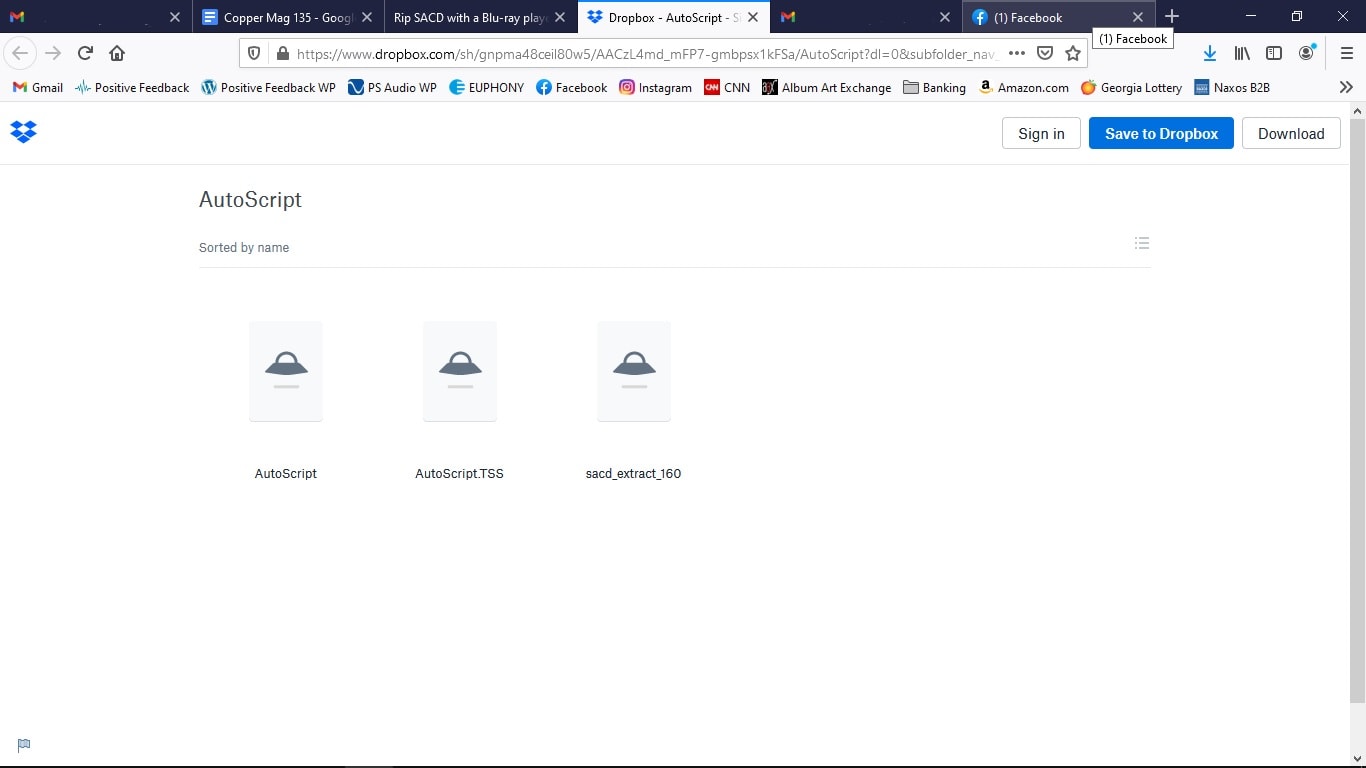
So, that’s everything you need; a functioning BD player properly set up, a properly formatted flash drive loaded with the AutoScript program, and the SACDExtractGUI program with the latest .exe update loaded onto your computer. I’ve done this on both Mac and Windows, and there’s one key setup difference. Windows applications and programs are automatically executable files upon opening, but that’s not necessarily true with Mac and Linux OS. The “SACD_Extract” file — which is the actual program that runs the process — has to be made a Unix executable file for Mac and Linux. Go again to page 15 on the HiFi Haven SACD ripping thread, to the same post that has the “Spoiler” links to the specific OS program files, and there are detailed instructions to easily make “SACD_Extract” an executable file using the Terminal function. I can’t honestly comment on Linux, but I know for a fact that it works with Macs.
All Blu-ray players have a USB port on the back panel, and some have one on the front panel as well; for some reason, the program seems to work more effortlessly when you insert the USB flash drive with AutoScript into the rear panel USB port (yeah, it’s much less convenient — sorry!). Connect the Blu-ray player to your network (if hard-wired) with the flash drive inserted, then power it on. It doesn’t need to be attached to a monitor, but you need to be able to determine the network address of the player. Since most networks tend to re-assign IP addresses with some frequency, it can be a bit of a task to keep up with your player’s current IP address. A handy smartphone app is FING, which will scan your network and identify your player’s IP address for you — it’s super-simple to use.

Then navigate to the location of the SACDExtractGUI program and double-click to open it; first of all, at the very top of the page and under “Program,” you’ll need to navigate to the location of the “SACD_Extract” executable file. There’s a test button and a prompt below will confirm that it’s working properly. Just below that, click the “Server” button, then enter the IP address of your Blu-ray player; the port will always be “2002,” and you can ping it and test it to make certain that you’re connected and the port is accessible. This program will work for extracting both the Stereo and Multichannel layers of an SACD, but be forewarned — that’s a ton of data, and ripping the entire contents of an SACD can easily run in the 4-plus GB range. For that matter, the stereo DSD files are very commonly 1 GB to 2-plus GB, so prepare yourself mentally for the long haul if ripping multichannel. In my experience, a typical stereo DSD extraction takes about 10 minutes or so.
The program offers multiple choices for ripping; you can rip the contents of the SACD to an ISO file — which is strictly for archival purposes, and can’t be played back without extracting the DSD files from it. Your other two choices are ripping as DSD Storage Facility (DSF) or DSD Interchange File Format (DFF). The difference is that ripping as DSF allows for the inclusion of metadata, and DFF does not, so if music library organization is important to you, DSF ripping is the only logical choice. So depending on what you want to extract, check “DSF” and Stereo and/or Multichannel. You might want to do a test rip; some DACs tend to insert a “pop” between DSD tracks. So you might want to also check the “Padding-less DSF” box, which tends to eliminate any problems of that sort. I’ve used it with all my rips, and haven’t noticed any issues of any sort.
The last thing you need to do is to navigate to your storage location, or wherever you plan on placing the ripped files for the short term. If you don’t browse to create a path for the Output Directory, the program will automatically place your ripped files into individual folders within the folder where the program is located on your hard drive. Just make certain that you have plenty of storage space available; I’ve ripped over 150 SACDs so far (in less than five days!), and ripping only the Stereo layers has already totaled almost 350 GB. I then transfer the files to another SSD that’s network-connected — surprisingly, the large files copy across my wired network very quickly. I then wipe them from my computer’s hard drive — at one point recently, I came within 1 GB of maxing out my computer’s M2 SSD drive, which wouldn’t have been good. And of course, you need to have some storage redundancy, just in case disaster happens and you lose a hard drive. You don’t want to have to go through this process again!
This surely goes without saying, but the ripping process is fairly labor-intensive for your computer. Not only is the laser drive of your Blu-ray player placed under a fair amount of stress, but it’s also helpful if your computer has a fairly robust processor with multiple cores, utilizes a solid-state drive, and is equipped with plenty of RAM. I’m using a fairly fast Intel Core i5, quad-core processor with an M2 SSD boot drive and 8 GB of RAM. It makes the process fairly effortless, but when an SACD rip is underway, my computer’s fan runs almost constantly and there’s a lot of buzzing and clicking — it’s obviously a pretty involved process.
By this point, if everything is a go, you’ll need to turn on the BD player again; because of the AutoScript on the inserted flash drive, the disc drawer should automatically open (I’ve noticed that it sometimes goes through this motion a couple of times — nothing to be worried about). Insert your chosen SACD, press the close button, and wait for the disc to load and show you the total disc playback time on the player’s display. If at any point, “WAIT” shows up in the display, something has gone wrong. But if the timing shows up okay, then touch the power button to power the machine down; when the machine display goes blank and the unit shuts down, remove the flash drive from the back of the machine. Then click the “Run” button on the SACDExtractGUI program; within a few seconds, the program should start, and you’ll see the disc ripping in the GUI display on your desktop.
As I noted above, if you’re only ripping the stereo layer of an SACD, it usually takes about ten minutes or so, and that’s for a hard-wired or wireless connection. And you don’t need to reinsert the USB flash drive with every rip; once inserted, it’s usually good for six or eight SACD rips. My experience is that the program tends to “lose its mind” after about six or eight rips, and the process is very specific to get back on track. If you go through the normal process and “WAIT” appears in the BD player display, a reboot of the player is required, and this can only be accomplished by physically power-cycling the unit by unplugging it from the power source and then re-plugging it. At that point, you also need to re-insert the flash drive; it’s basically just like starting over again, and the process has to be exact every time. 1) Unplug the BD player from the power source, 2) re-insert the flash drive, 3) re-plug the BD player to the power source, 4) insert the SACD, 5) power down the BD player after the total time shows up on the display, 6) remove the flash drive from the rear of the player, and 7) press the “Run” button on the extraction program. Follow these steps, and it works really effortlessly, and once you get the drill down, every single time.
It probably took me ten days to figure out how to get the very first SACD to rip; it was pretty much a combination of small errors and poor sequencing of events on my part. Probably the biggest hurdle for me was the whole “power cycling the BD player by unplugging it and replugging it” thing, which seemed really counterintuitive to me. And getting the flash drive with the AutoScript program properly formatted — this is vitally important. Also, if you’ve been ripping with a wired connection, and then decide to try wireless — the setup will revert to the wired IP address, which will have to be changed manually on the ripping program GUI. It really, really helps if your internet download speed is fairly fast; mine is only about 30 Mbps, and it works well with most everything, but don’t try running multiple devices simultaneously — your wife or significant other will end up getting kicked off the Wi-Fi signal, and if your situation is anything like mine, all hell will break loose!

I mentioned earlier that choosing to rip to DSF files is a great choice because it allows for adding metadata and images to the files. It’s a bit more difficult than editing the metadata with FLACs and other digital media, but I’ve found a really great freeware program, MP3tag, which works pretty effortlessly with DSF files. But it’s a little bit of a learning curve! So far, after about 160 ripped SACDs, I’ve pretty much discovered that you generally get most of the necessary metadata as part of the rip process, but it may need a little tweaking here and there. Some of the fields come up with incorrect or marginally correct information, but I’ve decided that having access to the music is the most important thing here, and if the metadata is less than perfect, I can live with that. You’ll definitely want to add album artwork to the files, and I’ve discovered by trial and error over a period of several years that after you drag the DSF files into MP3tag’s file name window, you need to use your cursor to highlight all the file names before you make any batch alterations to the tags. For example, when adding album artwork, you simply drag it into the artwork window (with all the tracks highlighted), then go to the top of the frame and click on the “Save” icon (it’s a floppy disk). Just keep the file names highlighted throughout the editing process, then click Save; that guarantees that everything is retained in your tagged information.
While there’s a lot of really great information at the HiFi Haven SACD ripping thread, it’s kind of pieced together in a patchwork manner, and takes a fair amount of dedication and desire to get things working. That said, I now feel pretty much like an expert of sorts at this — and it’s really gratifying to simply click a button and get really great DSD playback from my digital library without all the fuss. The sound quality is every bit as great as from a spinning disc — it’s darn near intoxicating! I’ve been listening to a ton of music that I don’t listen to as often as I should because of the added convenience factor, and I still stand by my previous declaration — DSD to me sounds so very much closer to analog than anything else out there.
Thanks to Mikey Fresh and everyone over at the HiFi Haven website for their dedication and perseverance in making this technology much more manageable for those of us who weren’t born computer geniuses. Oh, and in the three weeks since I spotted my working BD player at a Goodwill for $11, I’ve seen a couple more at about the same price, and they’re all over the internet. If you have any interest in this at all, have a fairly large library of SACDs and would like to try ripping them, it might be prudent to pick up a player or three just to have on hand. I know I will!
Header image: MSB Technology Universal Media Transport V.
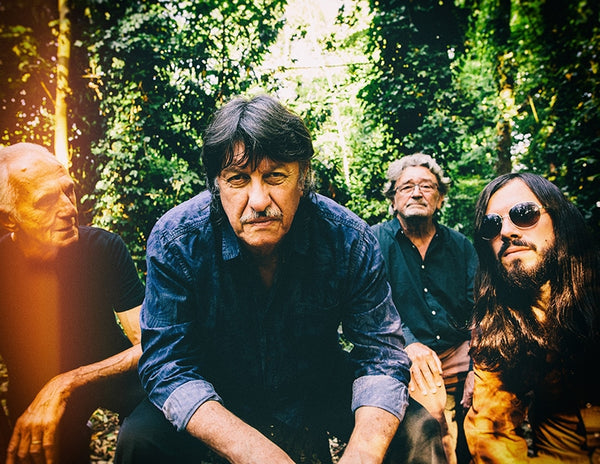
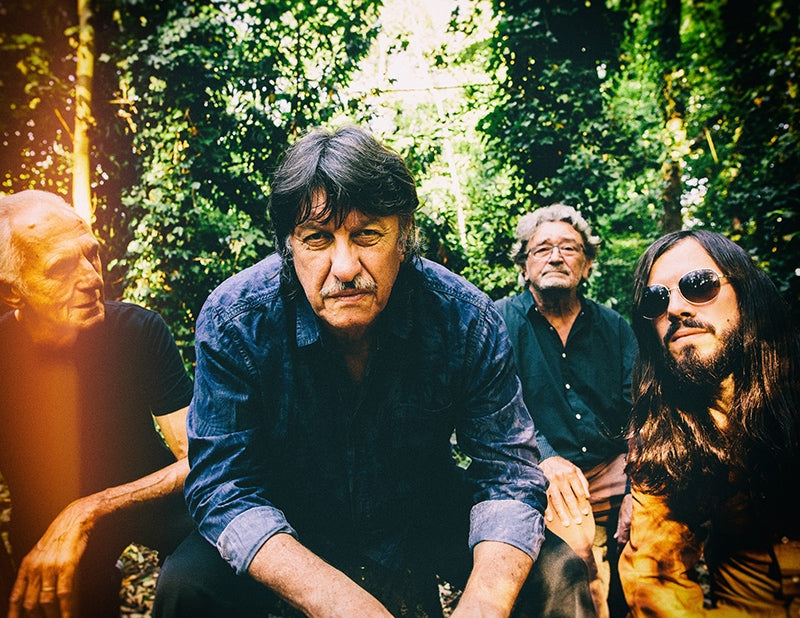
Deko Entertainment: Moving Rock's Legacy Forward
When Gene Simmons of the band KISS said that “Rock is dead” in 2014, it sent shock waves throughout the industry. He later clarified his comments by saying that new bands “haven’t taken the time to create glamour, excitement and epic stuff” and that they lacked the ability to develop a real legacy. Recently, he added to these thoughts by commenting on how the current music business model is really stacked against the artist.
The team at Deko Entertainment would probably agree with most of what Simmons has said. That in part is why they founded their label. Deko was launched with the intent of providing a home to legacy rock artists who were continuing to make great music but couldn’t capture the attention of any major label. These are artists that they felt continue to have a vision and a story to tell.
Partners Bruce Pucciarello, Grammy award-winning engineer Alan Douches, and musician Charlie Calv have focused on traditional artist development and a more evolved approach to marketing and promotion, helping Deko quickly grow into an enterprise that very well might be the model for music moving forward. Their business has quickly grown from a handful of vinyl projects to full-on representation of existing and emerging acts, with a variety of offerings. Their roster includes bands and artists like Ten Years After, Cold Weather Company, Albert Bouchard and Joe Bouchard (formerly of Blue Õyster Cult), legendary drummer Carmine Appice and now Tiffany among others.

New platforms are about to be launched which promise to take things to another level. In the process, Deko Entertainment might not only change the label business, but it just might transform radio, streaming and every other outlet designed to help you discover great music.
We caught up with the team and talked about the label’s origins and where they see things going forward. The energy they bring to the conversation was simply infectious.
Ray Chelstowski: How did Deko get its start?
Alan Douches: Deko really started about 25 years ago. I was working with artists who I felt were making really great records, but couldn’t get a record deal. Through my connections, mostly through working with a lot of indie labels, I managed to convince Big Daddy Records to distribute us. Unfortunately we didn’t have the personnel or the capital at the time to really take advantage. As we tried to reboot this four years ago, it was more because “physical” (sales of physical media) had dropped off. Everyone had access to digital distribution. For perspective, 60,000 songs a day are uploaded to Spotify. That’s a wonderful world, except it’s too “noisy” and there’s no way for an artist to get [the] branding [they need].
That’s when we realized that there was a need for physical [media]. So Charlie and I got together and approached ADA [Alternative Distribution Alliance} for distribution. We weren’t going to just pick up an artist’s back catalog, press it and hope for the best. This is about teamwork, and the artists have to be able to give us some shows [and] have to be able to tour at least regionally, and we kinda kicked it off from there.

With the addition of Bruce [Pucciarello] we are looking at a bigger picture. [We’re] not just looking at established artists that need a home, but also new artists who want to identify with their brand. It’s not about just throwing it up on Spotify and getting a bunch of likes.
RC: Indie labels like Wicked Records seem to be focused on a specific kind of sound. Deko seems more open to variety. How do you determine who belongs on the label?
Bruce Pucciarello: Deko is an entertainment community, and our commitment is to be open-minded and supportive of all music and art. The “institutional” approach is fine for some, but we aren’t looking to corner a market or focus our artists to leverage a specific fan base. Maybe it sounds antithetical to the typical business model, but we are just building a positive artistic community, and in our community, we love all different kinds of music. We want to [put] our artists [in a place] to create, and then it is our job to get [them] out to the public in a fair and equitable way and make enough money to invest in their next project. We meet with our artists constantly and we are available to all of our artists whenever they need us. We are not a record company. We are a partner for our musicians.

RC: Does being a musician give you a better perspective on how things should operate?
Charlie Calv: It does because I’m very empathetic to the artists, I understand how they feel. I know that there are a lot of labels out there who will put out your product. But once it’s out it’s hard to get return phone calls or get people to return your emails. We on the other hand are really passionate about what we do and if we are going to take someone on we’re gonna work it and make sure that the artists are happy.
RC: Deko has really assembled some great bundle packages by artist. How do you determine what goes in to each offering?
CC: It kind of depends on the artist. You need to find new ways to monetize product. You’re only going to sell so many CDs; you’re only going to sell so many pieces of vinyl. [But] what else can’t fans get access to? Especially due to COVID. You’re not going to shows. You can’t pick up a poster or a T-shirt. Why not make [all] that available and bundle items together? You make it cost-affordable and you try to tailor it to the artist. The success we had with the Bouchard brothers (of Blue Õyster Cult) was obviously [offering a package with] the cowbell. That was a no-brainer. It’s really coming up with creative things that the artist and the fans will both like.
 Albert Bouchard's Re Imaginos bundle with signed poster, CD and cowbell.
Albert Bouchard's Re Imaginos bundle with signed poster, CD and cowbell.
RC: Have you found that there is a sweet spot for pricing a bundle?
CC: We try to keep everything under $100. Then there’s shipping costs as well, which can become expensive. We are doing the 25th anniversary [edition] of the Guitar Zeus [album] with Carmine Appice. That’s going to be a heavy-ticket item. It will be four LPs, three CDs, a booklet, and a piece of jewelry that has Carmine’s logo on it. And the quality of this stuff is really good. That’s part of the beauty of having one of the partners in the company, Alan, being an award-winning mastering engineer. When we go in and remaster this stuff it sounds pretty awesome.
RC: Can classic rock radio become part of your future?
AD: I think that radio is going to need a really big reboot. They’ve been in need of that for a while because they just [haven’t] reinvented themselves. I think that we have to get back to the personalities. That’s what we [originally] fell in love with – which DJ brought us what music. My first label manager was initially a manager of a record store and as a freelance producer/engineer I would go to him and ask, “hey Mike, what’s gonna be hot?” He had that magic touch of being able to pick what was going to click. I didn’t read the “Heatseekers” [chart] in Billboard. Mike was in the store talking to kids and the record companies, and he knew what had a chance of making it. Maybe the next cool step for Deko is to have that person. I have someone in mind.
RC: With so much music being consumed through new channels, how are you looking at technology as a tool to drive the business forward?
BP: The best businesses come up with smaller pieces of effective technology to accentuate their specific business model. That leads to a flexibility they have that the larger companies can’t duplicate. I don’t think anyone else is doing that as much as we are.
AD: We just got our first beta version back of an ITV app that we are going to be porting over to Samsung and others. There are certain channels that will be designed for specific genres. But there will also just be storytelling, where you will see Tiffany followed by Cold Weather Company followed by Angel. And maybe it’s all because they have a really great story.

CC: With our [upcoming] Apple TV app/channel, we’re also going also be able to offer surround sound along with HD quality. The real audiophiles are going to love this stuff. If you’re an Albert Bouchard fan and you like the Re Imaginos record [a remake of the 1988 Blue Õyster Cult Imaginos album, which was originally supposed to be an Albert Bouchard solo album – Ed.], imagine having a couple of those tracks in surround sound!
RC: Which artists in your portfolio are you most excited about?
AD: I’m excited about all of our new artists and I think that Deko is really just getting started on this vision of an artist-centric place where you can create art again. I know that a lot of people are striving for that but I think we’ve got a good shot at it. We’ve got a good team and I’m looking forward to how we can present this to new artists.
RC: Record stores seem to be reimagining their spaces. How can a label help music get back to a place where the connection to the fan is more intimate?
AD: I have no problem with a record store selling socks or bandanas or coffee if we are promoting the art. Many record stores are putting in small stages and letting the in-store experience be part of the [overall musical] experience for their fans. We at Deko want to approach those mom and pops and help them get artists who will be entertaining, [and where] we aren’t just trying to push the hit single, but instead the [artist’s] whole story.
BP: “Farm-to-table” aptly describes a future vision and repurposing for the “record store.” I think labels need to take ownership and build community for each of their artists locally, with the record stores and the local independent [musical] instrument and [music] lesson centers. There is a natural synergy here that is often underutilized.

RC: When live music opens back up would you consider assembling a label tour?
CC: I’ve always been a fan of labels that do their own little mini-festivals and we actually had some conversations with some booking agents overseas before COVID broke out. From a human perspective, you create bonds for life at these festivals. We just started doing some live streams. Albert’s done Re Imaginos in its entirety and we’ll be streaming that. We have some other [things] planned [once] things open up because these guys wanna play!
RC: In addition to the new technology and broadening the artist roster, what’s next?
BP: We plan to onboard advanced technology from another industry, in order to streamline our merchandise sales and delivery systems. We are currently cultivating domestic and international partnerships that will benefit all of our artists and expand the Deko Entertainment portfolio.
CC: With some of the newer releases, we aren’t releasing the single and the album right away. We are going to release them as a mini-series or an EP where you’ll get three songs. Then we’ll release another EP. In the end, the culmination will be the double-LP or whatever it turns out to be.
We are just starting to cross-pollinate some of the acts so that younger artists have the opportunity to work and be mentored by some of these legacy acts that have seen it all; from songwriting to life on the road.
AD: When I was a kid growing up in the ’70s you sat there in that rocking chair with the vinyl gatefold open and headphones on and you took in every word and every note and you watched the [whole] picture unfold. You fell in love with it. I think we have a challenge in terms of how that [happens] now. We’re not ignoring technology. But it’s got to get more endearing [and] back to that love of the art. Even if it’s a small niche, if we can conquer it I’ll be happy.
Header image of Ten Years After courtesy of Rob Blackham.
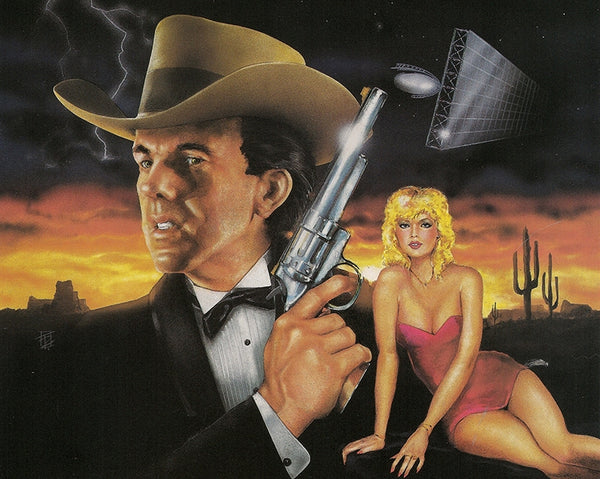
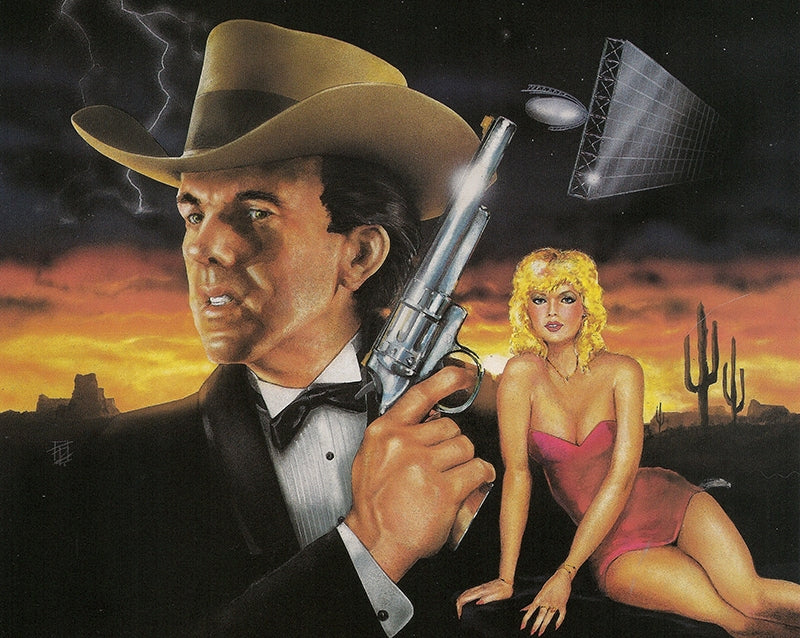
The Dawn of Digital and Film Sound Sync: Tales from the 1980s
- A cell phone was the size of a walkie talkie and cost over a thousand dollars a month, since you paid per minute for both receiving and making calls.
- 3/4-inch U-Matic and high-speed Betacam 1/2-inch video cassette formats were the indie professional workhorse choices for production.
- Multitrack recording on analog 24-track 2-inch tape was the industry standard.
- Macintosh computers had monochromatic (black and white) screen displays.
- People who worked in film and people who worked in TV/video were not only in separate camps, but had sufficiently dissimilar technical skill sets that they belonged to separate unions.
- The use of computer software for editing was still in its infancy, so video editing still was rendered sequentially on tape. Unlike today’s digital video editing where edited clips can be saved and randomly assembled (non-destructive), editing on videotape fixes the sequence of shots, and changes cannot be inserted without redoing the previous edits (destructive).
- Transfers of film to video were commonplace, but transfers of professional video to 35mm film were so rare that only two studios in the US had the technical know-how and equipment to execute it.
- Sony had created the F1 PCM stereo digital audio format to show off its technology in a consumer configuration that sounded so identical to its super-expensive professional system that the F1 and 501 tabletop consumer units became big sellers and Sony had to eventually scrap its pro system.
- Japanese musical instrument companies like Korg, Roland, Akai and Yamaha began marketing floppy disc-based digital sampling systems that were keyboard-triggered and available to working musicians, as opposed to the Synclavier and Fairlight systems used by people like Sting and Peter Gabriel that cost over $75,000.
 A Sony PCM-501ES digital audio processor atop a Sony Super Betamax video cassette recorder. Courtesy of Wikimedia Commons/Oliver A. Masciarotte.
A Sony PCM-501ES digital audio processor atop a Sony Super Betamax video cassette recorder. Courtesy of Wikimedia Commons/Oliver A. Masciarotte.
Only a few years out of film school at the time, I had been working on independent films, music videos, and documentaries to gain experience. The mid-1980s was a fascinating time for audio and video production. Prices for equipment that used digital technology had finally reached the point where the hardware became affordable for independent production budgets. While film and video were still in rival and presumed never-the-twain-shall-meet camps (the notion boggles the mind in 2021!), digital audio had made great strides towards commercialization into the high tech audiophile and low budget professional markets.
Although this was before hard drive storage for digital audio had become practical and tape was still the medium of the day, the first use of video cassettes as a storage medium for digital audio emerged with Sony’s PCM-F1 Digital Recording Processor, which used the Pulse Code Modulation (PCM) format, and was also sold as a tabletop consumer adaptor unit branded as the 501 ES, a similar unit which was also licensed to Matsushita/Technics. The PCM-F1 converted analog audio into 16 bit/44.1 kHz digital audio, but stored it as a video signal which could be recorded on 3/4-inch U-Matic, Betacam or VHS video cassettes. The video tape, made to hold not only standard stereo audio but full spectrum color video, was considerably more convenient, robust and capable of storing the digital info as binary code than the Ampex 456 or other industry-standard audio tape at the time.
Additionally, MIDI samplers that could store sounds on floppy disks and could be keyboard-controlled became available at reasonable and even budget prices for the first time. The Akai S612, Korg DSS-1, Emu Emax and Roland S-10 were a few of the better models.
I had partnered up with a classmate, Dan Godzich, to form an entertainment company to produce independent film and video. We previously had shot a couple of student project feature-length videos on VHS equipment, and then produced a music video (ironically shot on 16mm film) for my band, Nekron 99. The music video, “Reincarnations,” was a quarter finalist in MTV’s The MTV Basement Tapes competition.
An opportunity arose for Dan to write and direct a feature film with a predominantly French cast, through family business connections. Our entertainment company was effectively acquired by a larger French company and we went into pre-production.
When it came to budgeting for sound, I discussed with Dan about using all of the new digital technology that was available and that if we could find the right post-production studio and engineers to work with us, we might be able to cut the sound budget without skimping on audio quality. Little did we know that the audacity of our inexperience would eventually lead us to achieve a small milestone in independent film sound in 1986.
Our theoretical rationale was:
- We had experience in dealing with SMPTE time code for video and film sync, which was required due to the differential in the frames per second rate for each format (24 fps for film vs. 30 fps for video), and we hypothesized that using analog 24-track 2-inch tape would yield higher sound quality and more mixing flexibility than if we used the 35mm mag track format more commonly used in film sound, a format which was much more expensive.
- If we were able to digitally record all of the sound effects and store them in a sample library, to then be keyboard-triggered for Foley (sound effects) work, this would again save us a considerable chunk of the sound budget without compromising quality.
- ADR (Automatic Dialog Replacement) would be required, since the film would have some actors speaking in French while others spoke in English, and those actors who were bi-lingual would be speaking both languages depending on with whom they were acting, and which language was more comfortable for the particular scene. The goal would be to have a complete English dialogue track, separate from a complete French dialogue track, with consistency of voices for each character.
- By using 24-track analog, we could mix down to 1-inch 8-track and have stereo dialogue, sound effects and music with an extra track for “wild” sounds and SMPTE for sync. (“Wild” sounds include crowd noises, wind, air conditioner rumble, or any other kind of background sounds that needed to be present for an entire shot.) This would then be transferred to separate optical tracks for international distribution, which would use the existing music and effects but then each region would hire their own actors to dub the dialogue in other languages.
While the tale of how the production money was raised and the guerilla methods we used to shoot the picture is a whole other story unto itself, suffice it to say that after we completed all photography, Dan sequestered himself in France to edit the film while I looked in New York for a place to handle all of the post-production sound requirements. The final edited online video cut, a compendium of footage shot mostly in high speed Betacam but also in 35mm film, would then be transferred to a 35mm negative in Los Angeles and then back to New York to Technicolor labs into a color-timed processed print for theatrical projection. (“Color-timed” refers to the film lab process of correcting the color when creating a fresh print from a negative.) We would then be taking a timecode video copy of the print to create the entire soundtrack.
 Promo poster for The Source of Power, the film John Seetoo and Dan Godzich created.
Promo poster for The Source of Power, the film John Seetoo and Dan Godzich created.The primary hurdle was finding a studio that understood what we planned to do and would be willing to work with us on what would be uncharted territory, since there was no guidebook or precedent for producing film sound using this type of inter-platform method, at least in New York City’s film and video production circles.
The one negotiating factor in our favor was that music recording and mixing studios at the time rarely dealt with feature films, and video work was confined to music videos. The budget we were prepared to spend was only perhaps 30 percent of what it would have cost to do it conventionally in a film sound facility at the time, but was a substantial amount of billable hours for a music recording studio.
After visiting over a dozen studios that either told us point blank that what we proposed was impossible or that they understood conceptually what we wanted to do but lacked the skills and knowledge to achieve our goals, we found Active Sound, a studio in Soho. The owners and engineers were former Right Track Studios veterans: Steve Tjaden and Carl Farrugia.
Steve had substantial experience working with computers and syncing with tape machines, lights, projections and video from his work with avant-garde performance artists and musicians, among them David Van Tieghem and Roma Baran (producer for Laurie Anderson). Carl was a former neighbor and apprentice of none other than Les Paul, the inventor of multi-track recording.
Active was a studio designed for electronic music production that utilized computers, sequencing, MIDI, and sampling, running off Mark of the Unicorn software. Although primarily consisting of a control room and a small alcove for overdubbing, it was perfect for our needs and in retrospect, was a forerunner for many studios today.
Active had a 24-track MCI JH24 recorder (critical since it could handle 14-inch reels, which would match a 20-minute film reel’s running time), a rebuilt Trident console, Yamaha NS-10 monitors, and a nice collection of outboard gear, such as LA-2A and dbx compressors, Pultec EQs, Lexicon delays and reverbs, an Ursa Major Space Station delay, and a collection of rack mounted Yamaha, Roland, Oberheim, Akai and Emu synths and samplers. They also had both U-matic and VHS storage for digital stereo mixdowns through a Sony PCM-501ES digital audio processor.
 A Trident 24-channel console like the one John and Dan used in the production of the film. Courtesy of Wikimedia Commons/VACANT FEVER.
A Trident 24-channel console like the one John and Dan used in the production of the film. Courtesy of Wikimedia Commons/VACANT FEVER.

Most importantly, Steve and Carl were excited about the technical challenge and understood both the concept as well as the mechanics of how to pull it off, utilizing a TimeLine Lynx synchronizer to handle the SMPTE coordination between all of the machines. The fact that we would be block booking eight hours a day, five days a week for two months didn’t hurt either.
Looking back, we were fortunate to find Active. It was the only studio we met with who were willing to work on our terms and in our format. There was one other studio owner who understood what we wanted to do, but insisted that we rent his Synclavier for a separate daily fee for all of the digital sounds, which would require additional days of uploading, storage, and longer sessions, as he would be the only person allowed to touch it.
Having purchased our own Korg DSS-1 keyboard sampler and Sony PCM- 501ES processor, we had begun recording exclusive original sound for the film, essentially creating our own sound library, inclusive of Foley sounds. Every car door, footstep, splash, tree rustle, pratfall, car crash, gunshot…was created, recorded, and stored on a floppy disk or on VHS cassettes. Although we did have wild sound and location sound that we also used, we had no idea as to whether or not any sound might need to be augmented or replaced, and we didn’t want to audition third-party Foley and sound effects libraries, since Dan knew what he wanted and we had the means to get it ourselves.
With everything catalogued and finally ready to go, the studio soundtrack work was ready to begin.
Part Two of the story will appear in the next issue.
********

Trident Console
https://images.app.goo.gl/WQahufucX6NBZRUm6
Sony PCM 501 adaptor


The Yamaha Influence, Part Two
In Part One (Issue 134), we looked at Yamaha as being both a musical instrument maker and a manufacturer of audio components, and how each of those sides of the company influenced the other.
In this second installment, we further examine the company’s take on the production and reproduction of musical tone, and suggestions on how to get the best from their approach to high quality sound. I interviewed members of Yamaha UK’s Technical team and Customer Support sage Richard Billings.
Russ Welton: What is the best advice you can give to your customers for setting up their room when running the Yamaha Parametric room Acoustic Optimizer YPAO automatic room correction system, especially in a multichannel home theatre setup? (YPAO compensates for in-room frequency response irregularities to give listeners a smoother, more accurate frequency response from their systems.)
Yamaha Technical: The trick is what you do before running YPAO. The first thing to check is the phase of the subwoofer(s). [You want to do this] manually, [by listening]. Usually [you will set them to either] 0 or 180 degrees [out of phase]. You want to run [the system in] stereo with the sub on while listening to some music with good bass content and that you know well. You need to identify which setting sounds louder. This can be done even if you are right next to the sub, flicking the switch from 0 to 180.
Next step is [adjusting] the subwoofer’s volume. Although setting your subwoofer’s volume to halfway (as suggested by many) is normally OK, there’s a chance it’s not. If after running an [initial] measurement of YPAO you see -10db or +10db on the sub’s volume, reduce or increase the main volume on the back of your sub and start again. You want YPAO to be in full control of the volume, so seeing -7db or +8db is good, and tells you that YPAO is still in control.
 Setup screen from the Yamaha Parametric room Acoustic Optimizer (YPAO) system.
Setup screen from the Yamaha Parametric room Acoustic Optimizer (YPAO) system.The next bit of advice can make that last 5 percent of difference, and transform a great system into an excellent one, [whether you have YPAO or not – Ed.]. Trust your ears. Asking too much from any room correction [system] is ill-advised. My approach is to set up your speakers the best you can before [implementing] room correction, with a view to removing any dips in frequency response, Ultimately, you want to ensure each pair of speakers in your setup is pressuring the room to the best of their ability. That leaves YPAO mainly [for the task of] turning down or supressing [the] volumes of [certain] frequencies, not trying to add sounds that aren’t there in the first place!
I use a method very loosely based on the Master Set procedure created by John Hunter, owner of REL Acoustics. It has three main steps. One, clearing the dead zone – your speakers will sound flat if they are too close to a rear wall. Two, finding increased bass, by moving one speaker at a time out towards the side walls. Three, locking in the center image: vocals should sound like they are coming from somebody’s mouth and while standing up at a mic. Toeing in and adjusting the rake (vertical) angle of your speakers can achieve this.
A similar procedure can be done with your subwoofer. Step one, move the sub out from the corner of your room – there will be a point where you’ll feel and hear more focused energy and volume from the sub. Step two, [adjust the angle of] your sub so it fires across [the room] to the longest opposite corner. This helps the subwoofer frequencies build momentum and “breathe” within the room. You want the low stuff!
After you have run the YPAO, check the “speaker size” setting [to make sure your main speakers will optimally integrate with your subwoofer(s)]. In most cases what we run at home would be classed as “small,” meaning the speakers cannot reproduce frequencies down to 20 Hz. The crossover frequency is likely to be 80 Hz for most systems, which will produce a good amount of “slam.” Use this as a guide if you want to experiment. I found that my speakers, with bass response rated down to 38 Hz in ideal conditions, had more detail in the upper bass frequencies if I ran [the crossover at 60 Hz.
After this I like to check each pair of speakers in the system. [First, I’ll] only connect the left and right front channels, and check [to make sure I have a good] centered image and adjust level and distance if required. Then repeat this using only the left and right rear (surround) channels. Finally, connect just the left and right front presence (height) speakers (if you have a Dolby Atmos setup), and then play all the speakers [in the system]. It should sound like the music is in your head with no emphasis on any one pair of speakers; it should all blend together. Everything will simply gel and work together as one. Finally, you can select your preferred YPAO EQ setting, to Flat (consistent volume across all frequencies), Natural (softer treble, which some may prefer if you have hard furnishings) or Front (which timbre-matches all the speakers to follow the non EQ’d front channels). Richard Billings: Small rooms are quite lively and can produce some problematic frequency areas. By taking multi-point sampling frequency sweeps of the room, this helps to give a fuller impression of what is happening in that space, so that the processor can deal with, for example, issues at 400 Hz, 800Hz and 1,600Hz. The YPAO system works by measuring volume levels, and your speakers have a nominal volume. With that appropriate acoustic information, the system can be played [at different volumes] using adaptive EQ [and sound optimal at any volume,] because the EQ is based on the volume level. The system can be optionally run for late-night low-volume listening, for example. TT-S303 turntable and system.
TT-S303 turntable and system. CX-A5200 Aventage 11.2 A/V preamplifier with MusicCast wireless technology.
CX-A5200 Aventage 11.2 A/V preamplifier with MusicCast wireless technology.
RW: What are some examples of how a customer can get the most out of their surround system by using the technology in you’re A/V equipment? For example, how to adjust room size and speaker delay settings appropriately, or “stacking” DSP functions by using more than one at a time. YT: DSP programs have gotten so much easier now. With the introduction of our Surround:AI, which is found on the Aventage RX-A1080, RX-A2080, RX-A3080 and CX-A5200 receivers, you don’t need to adjust anything. Surround:AI will intelligently select the most appropriate Cinema DSP mode on the fly, as you listen or watch your favorite films or concerts. By reading the incoming metadata of a Blu-ray disc or 5.1 audio stream, it can dynamically change to extract the very best [surround sound performance for any genre] without any negative [effects]. Our engineers have been busy analysing hundreds of different materials to tune and teach Surround:AI to behave. The result is DSP like you’ve never heard it before, and an evolution of the technology. RW: You make some of your own internal components, such as loudspeaker drivers. What are some examples, and are these made exclusively for Yamaha products? YT: Yes, we do. All of the ZYLON (synthetic fiber) driver units found within the NS-5000 and NS-3000 loudspeakers are made exclusively by us for us. Manufacturing an NS-3000 diaphragm.
Manufacturing an NS-3000 diaphragm.
RW: You support the use of wireless rear speakers for Dolby Atmos and DTS:X. Also, tell us about MusicCast, your wireless technology for stereo, surround and multiroom audio. YT: All of our current MusicCast audio/video receivers now support MusicCast Surround; this enables our MusicCast 20 or MusicCast 50 streaming speakers to be used as wireless rears and our MusicCast SUB 100 to be used as a wireless subwoofer. Our customers can create up to 5.1.2 Dolby Atmos systems and only need to wire the front speakers to the amp. With the introduction of our modular upward-firing Atmos (height-channel) speakers, which can sit on top of existing floorstanding speakers, creating a high-quality 5.1.2 system is now even easier. RW: What are the newest developments audiophiles should be excited about from Yamaha? YT: As discussed, DSP has become much more advanced with the introduction of Surround:AI and [it has been] accepted more widely by our customers. Our audio components lineup (GT-5000, C-5000, M-5000, NS-5000, A-S3200, A-S2200, A-S1200 and NS-3000) is the best we’ve seen in many years. [The] investment in R&D [we made] when developing our 5000 Series will continue to appear in future products, which are still under wraps! Our A/V lineup also continues to benefit from [the R&D we put into] our CX-A5200 and MX-A5200; again, we will have more to share on this in the coming months. Hi-fi and A/V are both changing and advancing more than we’ve seen in over 10 years – it’s an exciting time to say the least. RB: There have been great strides made in the improvement of wireless technology, which is particularly useful for rear speakers. Previously they had [to work with] quite a compressed signal, but now [our wireless is] equipped with Master Audio DTS:X support and support for Dolby Atmos. It’s also scalable according to the height of your speakers, for an immersive 3-D sound. Live [performances] really showcase this well when sounds are coming from different places on stage. It’s like the equivalent jump of the Beatles going from mono to stereo, or quadraphonic to 3-D sound. [We are adapting to the times and providing for the way people now like to listen to streamed music, to make that sound as good as it possibly can. Our Compressed Music Enhancer function, [included in A/V receivers], decompresses the losses in MP3 files that result from having been made into a small file. It’s reverse-engineering the [data] compression and adding that information back in, [and can be turned on or off at the user’s discretion when listening to streaming audio or compressed music files]. Bass and treble dynamics are lost when compressed, but we can restore it. A-S3200 integrated amplifier.
A-S3200 integrated amplifier.
RW: When a firmware update improves the sound, what is this a result of?
YT: Firmware updates will mostly fix bugs in software. In the event that we release firmware to improve sound, this will be as a result of further tuning of EQ and DSP parameters, which can be done digitally and does not require any hardware changes.
RB: Yamaha makes something like seven new A/V [receiver models] per year, which covers most people’s wants and needs. The large range of our products helps customers [accommodate] a vast array of sound reproduction solutions. We can continue to support your product [as the result of] trickle-down technology and with new firmware updates until the hardware has reached its limitations.
RW: What else is of importance to Yamaha as a company?
RB: The importance of great support. Buying a product in the knowledge that there is after-sales support gives peace of mind for our customer should things go wrong. We don’t want to give our customers any reason not to be happy, because the products are good. Also, a good-quality retailer will help and support you.
The best judge is your ears. No one can trick you here.
Header image of Yamaha Aventage RX-A2A Dolby Atmos receiver and components, and all images courtesy of Yamaha.
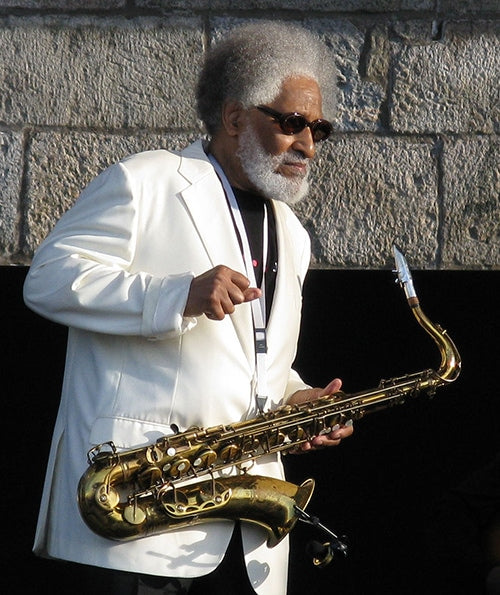
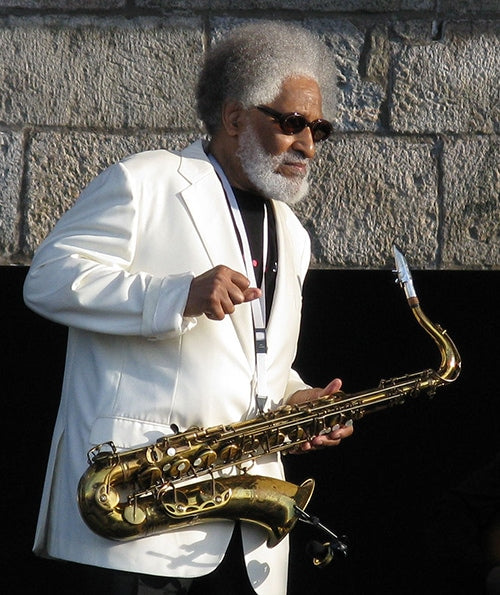
Sonny Rollins: Tenor Colossus
Known as the Saxophone Colossus, tenor sax master Sonny Rollins worked tirelessly in the jazz scene for over 70 years. Retired now at age 91, he’s one of the few still with us from the second generation of bebop.
Rollins grew up in Harlem. He started on piano and alto sax, but by the time he graduated high school, he’d settled on tenor. At that point he met trombonist J.J. Johnson, who helped him get his feet wet in the recording studio. Rollins has gone on to make nearly 100 albums, well over half of those as the lead player.
Drug use in the 1950s landed him in and out of jail and rehab. When he was available to play, it was with the likes of Miles Davis and Charlie Parker. As he worked more and more as leader of his own ensembles, he invented a sound known as “strolling,” with his tenor sax accompanied only by drums and bass, without piano. He often left piano out of his groups altogether.
Colleagues and jazz fans alike admired Rollins’ ability as an improviser. His particular strength was choosing catchy, well-known tunes and taking them off into a different plane. If you simply look at the track lists on most of his albums, they seem pretty run-of-the-mill. But to hear what he does with those toe-tapping standards is the grand listening adventure. [His 1957 album, Way Out West, is also an audiophile classic. – Ed.]
Enjoy these eight great tracks by Sonny Rollins.
- Track: “It’s All Right with Me”
Album: Work Time
Label: Prestige
Year: 1956
When Rollins recorded this album, he had recently joined the Clifford Brown/Max Roach quintet. Two of the musicians here, Roach himself on drums and George Morrow on bass, followed Rollins to the studio from that ensemble. The fourth player is pianist Ray Bryant.
You can hear how Roach and Rollins inspired each other on “It’s All Right with Me,” the standard by Cole Porter from his Broadway show Can-Can. The band takes it at a hopping pace, which seems even faster thanks to Roach’s double-time brushwork. After the first verse, Rollins is off on a wild exploration of the melody.
- Track: “The Freedom Suite”
Album: Freedom Suite
Label: Riverside
Year: 1958
Like his friend Max Roach, who also plays on this album, Rollins was vocal about the social injustice he observed in the treatment of African Americans. In the liner notes of the original pressing of Freedom Suite, he wrote, “How ironic that the Negro, who more than any other people can claim America’s culture as his own, is being persecuted and repressed; that the Negro, who has exemplified the humanities in his very existence, is being rewarded with inhumanity.”
Whereas the second half of the album is jazz versions of Broadway standards, Side A is quite a different beast, dedicated to the 19-minute jam, “The Freedom Suite,” by Rollins. It combines elements of hard bop and free jazz. This is one of the first albums to use the “strolling” texture, eschewing piano. Oscar Pettiford completes the trio on bass.
- Track: “Doxy”
Album: Our Man in Jazz
Label: RCA Victor
Year: 1962
Produced by jazz-industry stalwart George Avakian, Our Man in Jazz was recorded at the Village Gate in New York. By this time Rollins had moved to RCA Victor. The piano-less quartet includes Don Cherry on cornet, Bob Cranshaw (who would work with Rollins regularly for decades) on bass, and Billy Higgins on drums.
The tune “Doxy,” written by Rollins, was a favorite of Miles Davis, who recorded it a couple of times. Jazz historians have noted the change in Rollins’ style as he revels in long, elaborate fantasies of improvisation, without being tethered to a recognizable, recurring touchstone.
- Track: “On Green Dolphin Street”
Album: Sonny Rollins on Impulse!
Label: Impulse!
Year: 1965
As the album title implies, Impulse! Records was happy to have Rollins in their catalog. For a change of pace, Rollins works with a pianist here, his old friend Ray Bryant. Walter Booker is on bass and Mickey Roker on drums.
By this point Rollins was accustomed to his long-lined exploratory approach to standards, and he chose a great one to open with. “On Green Dolphin Street” was written by Bronislow Kaper for the 1944 film Green Dolphin Street. It’s a terrific swing melody favored by many jazz greats over the decades.
- Track: “Skylark”
Album: Next Album
Label: Milestone
Year: 1972
For his first album in six years, Rollins moved to Milestone Records. Next Album was produced by Milestone founder and jazz essayist Orrin Keepnews. The line-up is a sextet, heavy on the rhythm with both drums and percussion on some tracks. There are only five tunes, mostly new works by Rollins. The final track is the only well-known song.
This version of Hoagy Carmichael’s standard “Skylark” is over ten minutes long. The opening couple of minutes are Rollins playing a cappella. It’s an incredibly intimate 61 seconds before the band comes in, as if we’re listening to one of history’s greatest saxophonists noodling around in the privacy of his living room.
- Track: “Swing Low, Sweet Chariot”
Album: The Cutting Edge
Label: Milestone
Year: 1974
What could be better than Rollins playing a 14-minute version of a beloved spiritual at the Montreux Jazz Festival? How about the addition of jazz bagpipes?
The combination of these two types of reed instruments, bagpipes and saxophone, yields an alien yet intriguing sound, which Rollins and Rufus Haley explore with abandon, and for its own sake, in the first two minutes of this track before there is any hint of the song. Then Haley plays the melody first; it’s easy to imagine that Rollins loved how the tune’s pitch range doesn’t fit on the bagpipe chanter, so it must be split angularly between two octaves. Rollins lets his guest take the first few choruses and then solos himself starting around 6:00, with impressive textural help from conga master Mtume.
- Track: “Joyous Lake”
Album: No Problem
Label: Milestone
Year: 1981
Although critics were in general not too enthusiastic about No Problem, an album produced by Rollins and his wife and manager, Lucille Rollins, it does have some interesting aspects. For one, we get to hear Rollins in a different stylistic context, in a sound influenced by smooth jazz and R&B. It features the vibraphone work of Bobby Hutcherson and some fluid phrasing on electric guitar by Bobby Broom.
“Joyous Lake” is the final track and one of Rollins’ compositions. The hook is tight and pop-like, brightened by Tony Williams’ drumming. The best thing about this track is its humor. Rollins quotes various songs and squeaks way above the normal range of his instrument, as if to remind the curmudgeonly critics that it’s okay for jazz to be fun.
- Track: “Tenor Madness”
Album: G-Man
Label: Milestone
Year: 1987
Recorded live at an outdoor venue in Saugerties, New York, this recording was originally part of a documentary by Robert Mugge called Saxophone Colossus.
This track was not on the original LP version but was added when the album came out on CD. Rollins had been playing his composition “Tenor Madness” since the 1950s, so it’s interesting to hear it 30 years down the line. The performance is raw and vibrant, with Rollins still in the top echelon of latter-day bebop players.
Header image courtesy of Wikimedia Commons/RI-jim.
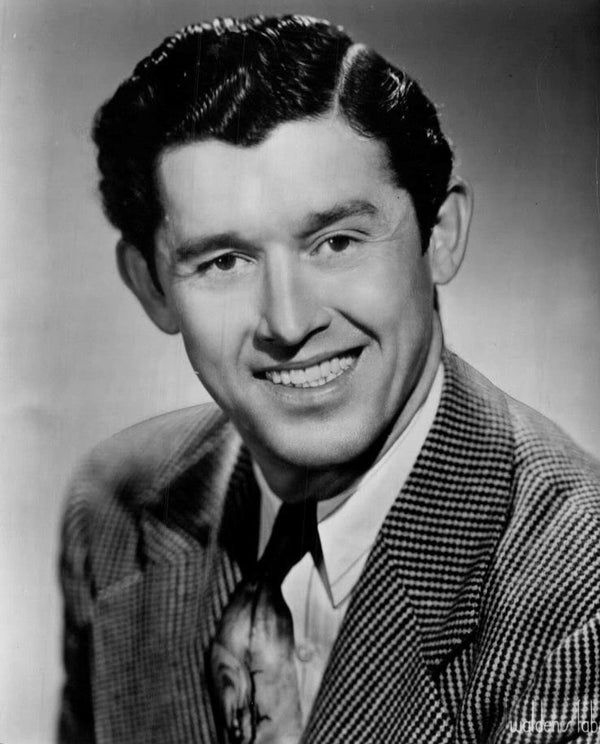
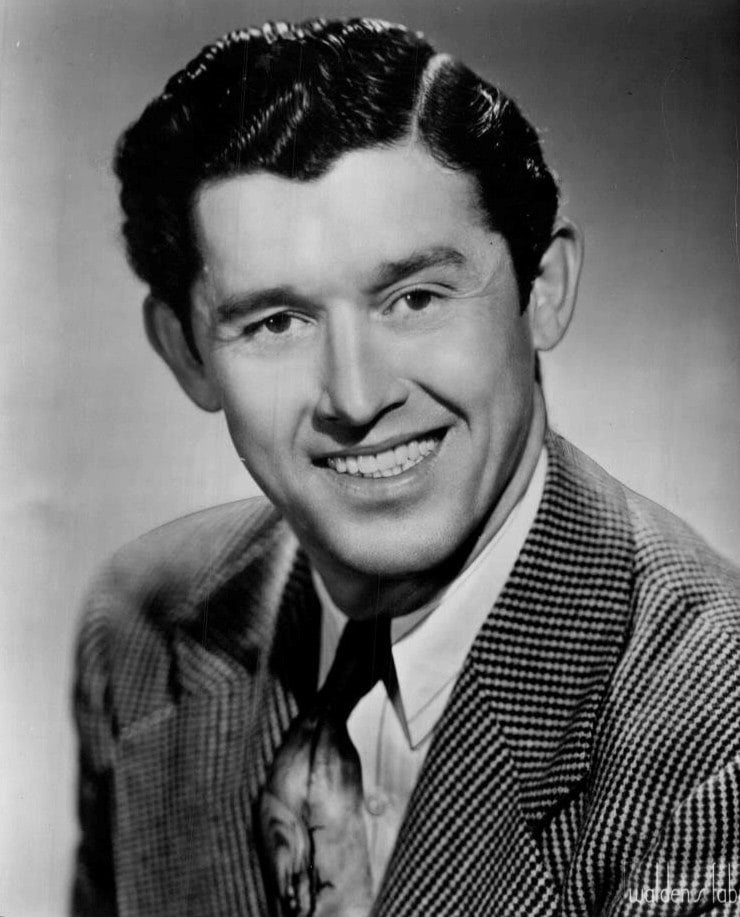
Roy Acuff: Country Music Originator
It’s fair to say that singer Roy Acuff was one of the inventors of country music. He was among a handful of innovators who shifted the sounds of old-time mountain music into the popular sphere until it took over the national airwaves.
Acuff was born in 1903 in the little town of Maynardville, Tennessee. Growing up in nearby Fountain City, he enthusiastically sang in the choir and acted in school plays while planning for his career in baseball. He was at the stage of trying out for the minor leagues when a severe case of sunstroke ended his athletic hopes. While he was getting well, he passed the time by fiddling, imitating the sounds he admired on mountain music records his dad bought him.
By the 1930s, Acuff was playing regularly at in-person and radio gigs. He formed the Tennessee Crackerjacks with friends who played guitar and steel guitar. Acuff became well-known among local radio staff for his ability to sing louder than all the instruments combined. It was with that big, clear voice that Acuff would establish an important change in the music industry: he brought the focus of string-band music toward the singer, which thereby turned the band into the accompaniment rather than the feature.
As the decade wore on, the band changed its name to the Crazy Tennesseans and started recording. Two of their singles, “The Great Speckled Bird” and “Wabash Cannonball,” were genuine hits, remaining audience favorites throughout Acuff’s six-decade career.
Acuff made nearly 40 studio albums. One of the last to be released (1984) contains his earliest known recordings, Rounder Record’s Steamboat Whistle Blues: 1936-1939. The song “Steamboat Whistle Blues” is a 12-bar blues recorded in 1936 as a single on OKeh Records. (That’s one of those labels from the days when phonograph companies, in this case the Otto Heinemann Corporation, made their own records in order to help sell their hardware.) The arrangement features a guitar solo between each verse. The band used something – a jug, probably – to sound like a steamboat whistle at the end. Acuff is on both fiddle and vocals.
Next stop was the Grand Ole Opry. The band auditioned in 1938 and was hired by Opry founder George D. Hay on the condition that they change their name to Roy Acuff and His Smoky Mountain Boys. A more substantive change occurred in the band at this time, when slide guitar player Clell Summey quit the band and was replaced by a dobro player, Bashful Brother Oswald (the stage name of Beecher Kirby). That dobro sound became part of the band’s signature.
Another of Acuff’s lasting contributions to the country music scene stems from how seriously he took the need to document ownership of his music, both on vinyl and on paper. He and composer Fred Rose started Acuff-Rose Music Publishing in the early 1940s, and it flourished into the 1970s, largely because of its reputation for treating its writers well. The Acuff-Rose company also opened its own recording studio in the 1940s.
In addition to his enduring hits, Acuff put out some records that seem like oddities today. One of those is “Old Age Pension Check,” a fascinating piece of history from 1940, when the social protections put in place by the US Government in hopes of preventing another Great Depression were still new enough to be worth singing about.
Like many early country stars, Acuff’s musical output straddled bluegrass and gospel. He had great success whenever he focused on the latter, including the album Favorite Hymns, release in 1958 on MGM records.
It’s striking to hear the difference in performances of the song “Were You there When They Crucified My Lord,” comparing Acuff’s rousing version – the harmonica, fiddle, dobro, and standing bass pump it like a dance tune – with the slow, awe-struck interpretation by Johnny and June Carter Cash. Here’s Acuff, in what is certainly the more traditional mountain style.
Just for reference, here’s Cash, getting philosophical:
An interesting development in the early 1960s was the way the term “folk song” creeps into industry lingo, thanks to the folk revival then fomenting in Chicago and New York City. The 1963 Acuff album American Folk Songs is a case in point. His Smoky Mountain Boys – by this point that name is more of a trademark than a specific band – clocks in at eight players in addition to Acuff himself on fiddle.
Acuff sticks close to his traditional Appalachian roots on this album, even when choosing more recent songs. “Birmingham Jail” was written in the 1920s by Georgia-based duo Darby and Tarlton and enjoyed some success from other singers, ranging from Leadbelly to the Andrews Sisters. The waltz tune is also the melody for the traditional mountain song “Down in the Valley.”
They say one legend recognizes another, so a tribute album to a fellow founding father of country music was hardly a surprising development. In 1966, Hickory Records released Roy Acuff Sings Hank Williams. Although not as well remembered as Williams today, Acuff was just as important to the foundations of country music. He was only the fourth person ever inducted into the Country Music Hall of Fame (Williams was the first, of course), and the first living artist to receive that honor.
There a range of Williams’ hits represented on this homage, from “Mansion on the Hill” to “Jambalaya.” On the closing track, “I’m So Lonesome I Could Cry,” you get a particularly good comparison with Williams’ voice. It’s not just that Acuff’s pitch range is higher, but the emotions are more intense and at the surface. He also has a more straightforward melodic line than Williams, leaving out the line-ending yodel-like flips and ornamental turns found in the earlier recording.
Here’s the original Williams version:
At the age of 72, Acuff showed a remarkable willingness to expand his definition of country. His 1975 album Smoky Mountain Memories contains a wide range of songs, from “Waltz of the Wind,” which his old friend Fred Rose had written for Hank Williams in 1948, to a couple of 1960s numbers penned by Nashville writer Kallie Jean (aka Kallie J. Smith).
But then there’s “Take Me Home, Country Roads,” premiered by the young John Denver only four years previously. Here’s Acuff’s take on what must have seemed like a very modern song to his old Opry ears. The swinging banjo part gives it an Appalachian flavor.
Although Acuff didn’t do much recording in the last decade of his life, he never stopped performing. Newly widowed in 1982, he moved into a house on the Opryland grounds and performed at the theater every night. He died in 1992.




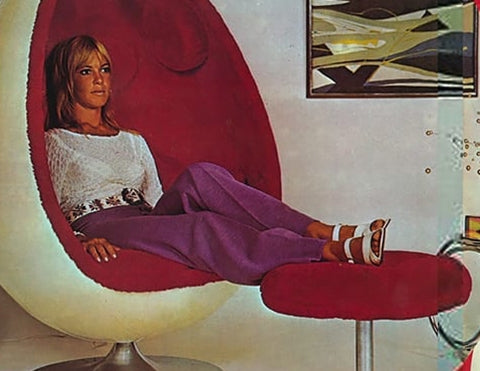
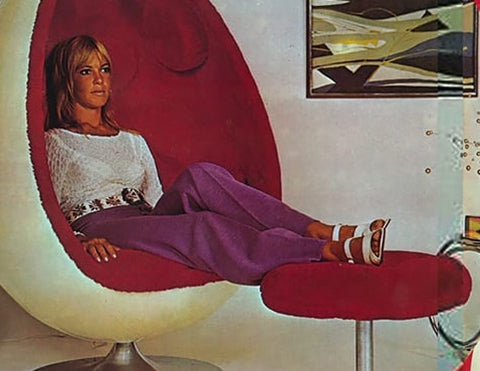
The 8-Track Mind

A shrine to 8-track tape! Taken at The Telegraph record store, New London, Connecticut. Photo by Ray Chelstowski.

We can't think of a better Mother's Day gift. Philips ad, 1950s?


Well, maybe this! It's a 1996 Rykodisc promo item that contained a chocolate disc inside a CD jewel case.

So cool-looking, who cared if the stereo laid an egg? 1970s Panasonic ad.
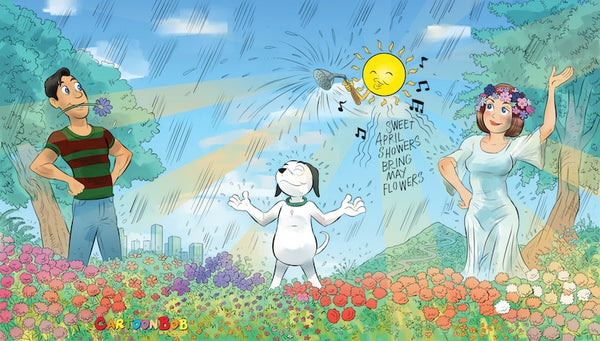
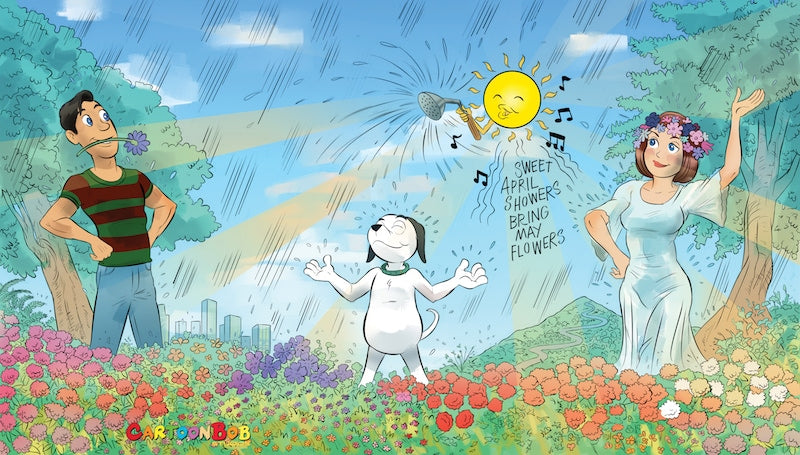
Our Staff
Staff Writers:
J.I. Agnew, Ray Chelstowski, Cliff Chenfeld, Jay Jay French, Tom Gibbs, Roy Hall, Rich Isaacs, Anne E. Johnson, Don Kaplan, Don Lindich, Tom Methans, B. Jan Montana, Rudy Radelic, Wayne Robins, Alón Sagee, Ken Sander, Larry Schenbeck, John Seetoo, Dan Schwartz, Russ Welton, WL Woodward, Adrian Wu
Contributing Writers:
Ivan Berger, Steven Bryan Bieler, Robert Heiblim, Ken Kessler, Stuart Marvin, Bob Wood
Cover:
“Cartoon Bob” D’Amico
Cartoons:
James Whitworth, Peter Xeni
Parting Shots:
James Schrimpf, B. Jan Montana, Rich Isaacs (and others)
Editor:
Frank Doris
Publisher:
Paul McGowan
Advertising Sales:
No one. We are free from advertising and subscribing to Copper is free.


Reclamation Project
A commercial building in Lake City, Minnesota, near the Mississippi River. The foliage is slowly reclaiming the building.
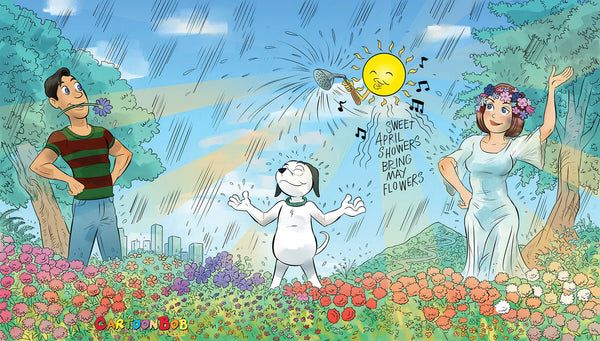
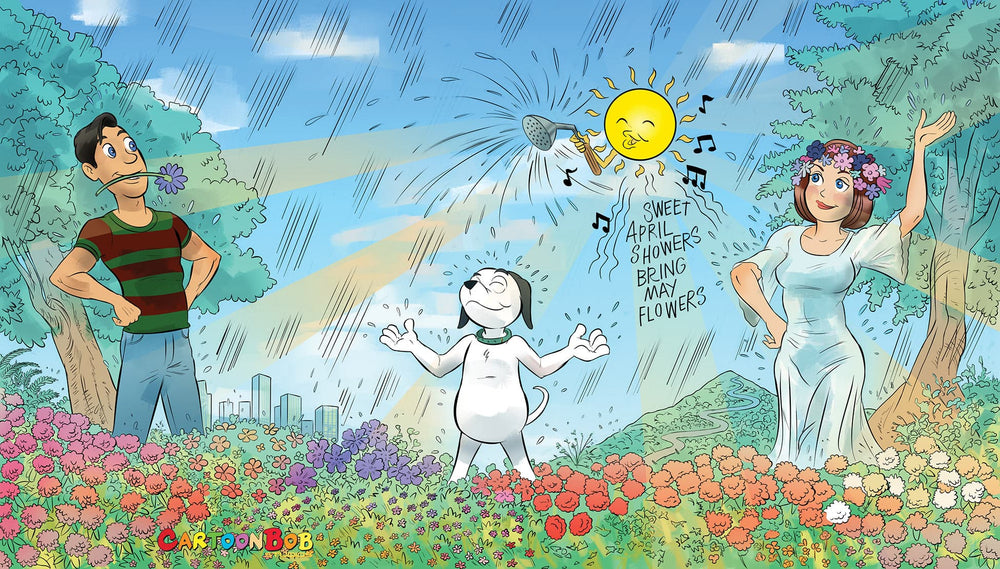

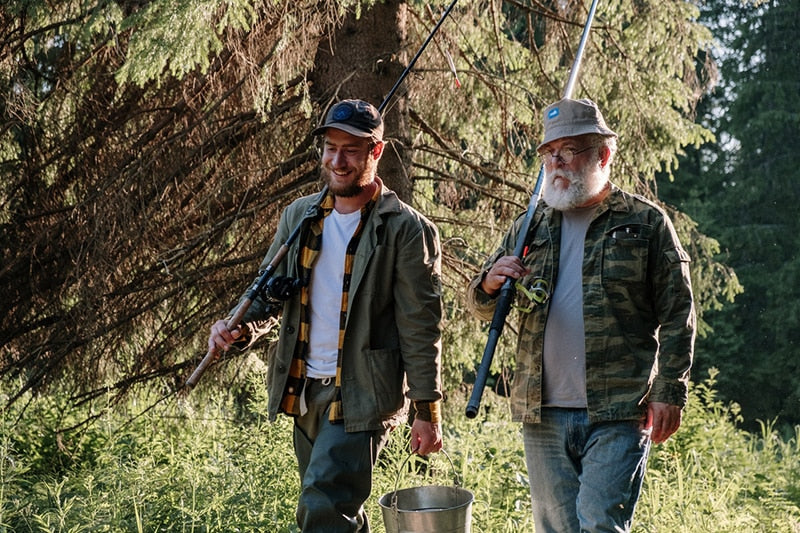
Camaraderie
Brother Crawford lived in a senior care facility where, I’m told, he was a beacon of light to the other residents. In return, they treated him like a saint.
My best friend, Darwin, commented one day that Brother Crawford must have been bored in the home. I was surprised to hear that from him. He was an overstrung high school athlete who didn’t seem particularly sensitive to others. “We should take him fishing with us,” he suggested. The idea of two scrappy kids with fresh drivers’ licenses spending a Saturday fishing with a fragile old man seemed incongruous to me. “I’ll borrow my neighbor’s aluminum rowboat and we’ll go pick him up.”
The next Saturday at 10 am, Brother Crawford was standing outside the senior care facility, cane in hand, beaming like a lighthouse. We drove several miles to a shallow, rocky river, loaded Brother Crawford and our poles into the boat, and pushed into the water. Darwin rowed towards an eddy he knew, surrounded by mature trees where trout tended to congregate. We could see them swimming below us in the cold, clear water. It was an idyllic spot.
Despite his Marine background, Brother Crawford didn’t have a clue how to fish. Darwin patiently tried to show him and he listened intently, but it soon became apparent that fishing was not Brother Crawford’s priority. While Darwin and I focused on catching something, he marveled at the beauty of the scene, the warmth of the sun, and how much he appreciated the opportunity to enjoy them with us.
“It’s important to stay quiet when fly fishing,” Darwin eventually commented, but silence was not in Brother Crawford’s repertoire. He continued to relate stories of his past as they popped into his head. Sometimes, he repeated himself. I wondered how long Darwin would tolerate this.
After an hour, Darwin exclaimed, “Screw this!” and jumped out of the boat, boots, and all. He high-stepped his lanky legs upstream as fast as the knee-deep water would allow, his long arms flailing for balance. I cringed, thinking he’d cracked.
Then he plunged down, and to our astonishment, pulled out a large trout. With the fish flopping between his hands, he smiled and hollered, “I got the bastard!”
Brother Crawford laughed so hard, streams of tears were running down his face. He had to brace himself to stay in his seat. Darwin threw the thrashing trout into the boat, laughing equally hard. We were apoplectic for at least 10 minutes. All wildlife for a mile around must have fled in fear of these crazy interlopers. It was a transcendent moment which, 56 years later, still brings a glow to my heart.
For months until his death, Brother Crawford repeatedly and gleefully related this story in church. It must have been the highlight of his senior years.
As I matured, I couldn’t rationalize the theology of the church and dropped out. That was a mistake.
It wasn’t the ideology that mattered, it was the camaraderie.
Would any loving Father disagree?
Header image courtesy of Pexels.com/cottonbro.
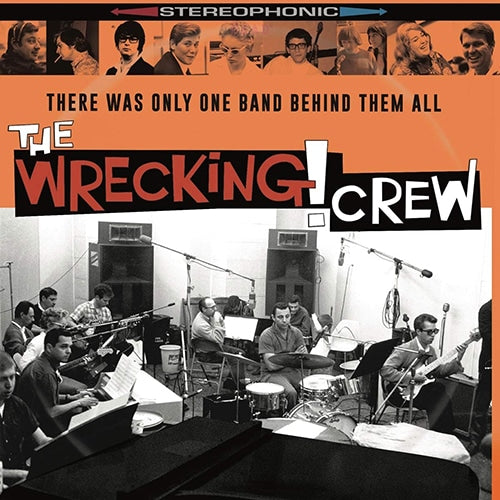
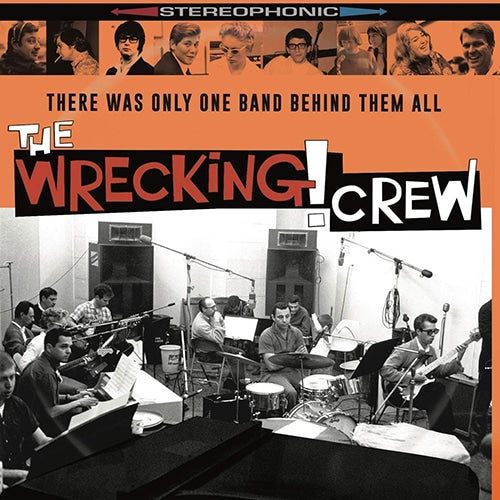
The Wrecking Crew: The Legends Behind the Hits
In 1966 Sonny and Cher were recording a song with Los Angeles session players. The bass player, Carol Kaye, related that she was on the session and was shown the song, which she considered a dud. Knowing it needed a hook, she wrote this bass line.
With Kaye’s help “The Beat Goes On” was released as a single, hitting No. 6 on the Billboard Hot 100 chart in 1967. Brian Wilson once claimed that Carol Kaye was the best bass player in the world.
Before 1955 the recording industry was dominated by studios based in New York. There was jazz recording going on in Los Angeles, country in Nashville, blues and R&B in Chicago, and Sam Phillips at Sun Records in Memphis was living the rockabilly dream. However, New York was the dominant scene in 1955. Stax, Motown, and Fame Studios in Muscle Shoals were but dreams in the minds of extraordinary men and women.
The period of 1957 to 1960 saw the dreamers wake up. Jim Stewart and Estelle Axton solidified Stax from its origins as Satellite Records as the Memphis/Southern soul music center. Berry Gordy bought a house in Detroit, named it Hitsville and started Motown. Jim Hall gathered some high school kids from a sleepy town called Muscle Shoals, Alabama, to start Fame Records, and Sam Phillips had sold Elvis Presley’s contract to Colonel Tom Parker for $40,000 so he could invest in other artists.
Not a great plan, but good for him.
New York music producers began turning their attention away from the buttoned-down record machines to these new formats that were creating the flexibility and muscle feeding the rock and roll explosion.
Also moving in that direction was a small group of LA session musicians including Barney Kessel, Ray Pohlman, Earl Palmer, and Hal Blaine among others. Blaine remembers in his 1990 memoir Hal Blaine and the Wrecking Crew that the suit and tie set of musicians in the LA sessions at the time claimed these guys were going to wreck the recording industry with this rock and roll music which could not last. The moniker “the Wrecking Crew” was born sometime in the 1960s, but group names like “the Clique” and the “First Call Group” are also remembered by surviving members of this iconic and largely unknown group of session players. We’ll just refer to them as the Wrecking Crew or the Crew for ease here.
By contrast to the Crew, Motown, Stax and Muscle Shoals had relatively finite groups and set of players. Ask any member of the Wrecking Crew how many players there were during this time and the answer will vary from 10 or 12 to 30.
The hits that came out of Stax, Motown and Fame were staggering and got a lot of attention from New York producers like Jerry Wexler. I would however venture that what happened in LA in less than a decade defies belief.
Interviews with people like Dick Clark about this period state that no one knew who these players were on all those hit records. We didn’t know but didn’t much care. Growing up in this period, I personally never believed that all these groups like Sonny and Cher, the Association, the Everly Brothers, the Righteous Brothers and all those Phil Spector “Wall of Sound” groups like the Crystals and Ronettes were playing their own music. As we later found out, what we did not realize was that each of those back-up groups on all those records were one shifting menagerie of players who recorded all of it. Take a deep breath and let’s dive in.
The Beach Boys’ Pet Sounds set a bar for rock and roll that inspired the Beatles Sgt. Pepper’s Lonely Hearts Club Band. Brian Wilson had arranged to have the Crew play all the band’s parts while the boys were touring. The other members of the Beach Boys were miffed when they found this out, but after watching some sessions, realized these Crew members were a highly efficient machine that could get done in a day what would have taken them weeks. Lee Sklar, a momentary member of this crew, estimates he has played on 2,500 albums over 50 years. Dig that math. That is 50 albums a year and he spent most of his time touring! Drummer Earl Palmer related that the Crew could do an album a day – and often had to.
Gary Lewis and the Playboys, the Monkees, Herb Alpert and the Tijuana Brass, the Byrds’ first single, “Mr Tambourine Man,” Gary Puckett and the Union Gap, the Fifth Dimension, Dean Martin, Petula Clark and Johnny Rivers, except for vocals, all Crew. They backed up Ike and Tina Turner, Jan and Dean, Ricky Nelson, the Mamas and the Papas, Frank Sinatra on “Strangers in the Night” and Frank and Nancy Sinatra’s “Somethin’ Stupid.”
Of the 20 or so players who loosely were members of the Crew, a few were central, and some even went on to illustrious careers of their own. Two remarkable examples were Glen Campbell and Leon Russell. There is a documentary, The Wrecking Crew, which, if you are interested, tells many of the stories that I won’t spoil by relating them here. But to hear Glen, Leon and Cher reminiscence about each other and other crew members is historic and fun.
I will speak to a few of the moments that stand out, while noting that all these guys and gals were remarkable and important on their own. First up, the drummers.
Hal Blaine
Born Simon Belsky in 1928 in Holyoke, MA, his family moved to my old stomping grounds of Hartford, CT, (pronounced Hahtfed) and then to California, where Blaine studied drums with Roy Knapp and started playing the big band and jazz circuits around the country with the likes of Count Basie, Patti Page and Tommy Sands, where he perfected his sight-reading skills.
By the late 1950s he’d given up touring and settled into session work. He particularly enjoyed playing the rock and roll of the period and became a fixture in Phil Spector’s “Wall of Sound” sessions, sometimes involving more than a dozen musicians. Brian Wilson relates that the Ronettes’ “Be My Baby” was the perfect pop song, and forced him to pull his car over to the side of the road when he first heard it. There is that famous stop in the end where Blaine pops out the count with a snare on 4 that he claims was a mistake, but Spector left it in.
Blaine played on an estimated 140 Top Ten records and 40 No 1 hits. His work included movie and television sound tracks as well as some of the most remembered rock songs from the period.
Earl Palmer
He was born in New Orleans and started as a tap dancer in his mother’s vaudeville act. He served in World War II and after the War, picked up drums and percussion. While still in New Orleans he backed up acts like Fats Domino and Professor Longhair, and played on a lot of Little Richard’s hits. In 1957 he moved to LA and began an incredibly busy career in session work.
Besides his work with the Crew, he played on movie soundtracks as eclectic as Judgement at Nuremberg, It’s a Mad Mad Mad Mad World, Cool Hand Luke, In the Heat of the Night, Robin and the 7 Hoods and How to Stuff a Wild Bikini. To name a few television credits: The Flintstones, 77 Sunset Strip, I Dream of Jeannie, Peyton Place, The Man from U.N.C.L.E, Green Acres, Mission Impossible, M*A*S*H and Ironside. Crazy, because you know he played on many more duds than hits.
Palmer’s career continued into the ’70s and ’80s playing for folks like Tom Waits, Randy Newman, Bonnie Raitt, Little Feat and Elvis Costello.
The man credited with coining the term “funky” died in 2008, but not before becoming one of the first session players to be inducted into the Rock and Roll Hall of Fame in 2000.
Some of the others…
Ray Pohlman – Bass
Pohlman was an early member of the Wrecking Crew and probably the first rock bass player of whatever this group was. He played both upright and electric. His list of artists he backed up is as nuts as the rest of the Crew’s and includes Ann-Margret, Pat Boone, Leonard Cohen, Sam Cooke, Doris Day, Duane Eddy, Merle Haggard, Emmy Lou Harris, Willy Nelson, Bette Midler, Paul Revere and the Raiders and the Turtles among others. Phew.
Carol Kaye – Bass
Kaye is my personal favorite member and a big influence of mine. Her impact was enormous and she was well-known as a player that could take a dull track like “The Beat Goes On” and give it the hook for a hit.
Kaye started as a guitar player doing session work for a living. She was a single mom and the session schedule allowed her to be home in the evening. This is remarkable considering it was a vastly male-dominated industry at the time. She had to have been tough to survive in that environment. Kaye took over on bass on a session when the bass player didn’t show, and because her ear was always listening to the bass anyway, she settled right in on the instrument.
Think about what this next song would be like without the bass part in the beginning and then driving the chorus. Kaye says Brian Wilson wrote the bass part, which I believe, but Kaye gave it life. And that’s Hal Blaine providing counterpoint with the syncopated drum part before the choruses.
Paul McCartney has stated that his bass parts on Sgt. Pepper’s Lonely Hearts Club Band were inspired by Kaye’s bass playing on Pet Sounds. Quincy Jones said in his autobiography Q that “women like bass player Carol Kaye could do anything and leave the men in the dust.” Dr. John noted, “she’s a sweetheart as well as a kick-ass bass player.”
A few of her credits: Buffalo Springfield’s debut album, Nancy Sinatra’s “These Boots Are Made for Walkin,” “Batman Theme” by the Marketts, “Scarborough Fair/Canticle” by Simon and Garfunkel, Richie Valens’ “La Bamba,” and amazingly, Freak Out! by Frank Zappa and the Mothers of Invention.
Plas Johnson – Sax
Born and raised in Louisiana, at the age of 24 Plas moved to LA and settled into session work after backing bands like B.B. King and Johnny Otis.
Besides his session work with the Crew, he played in Henry Mancini’s band in the late 1950s and early 1960s when Mancini was doing an insane amount of television, pop and movie recordings. Mancini wrote the iconic sax part in the Pink Panther Theme specifically with Johnson in mind. I know as you read that, the sax solo started in your head. I know it.
In addition, Johnson played on sessions with Marvin Gaye, Dr. John, Maria Muldaur, Ry Cooder, Rita Coolidge, Boz Scaggs, Joni Mitchell, Elton John, Linda Ronstadt, Tom Waits, Benny Carter, Bette Midler, Liza Minnelli and others.
Tommy Tedesco – Guitar
Tommy Tedesco was a talented character named by Guitar Player magazine as the most recorded guitar player in history. Born in Niagara Falls, he always wanted to make a living playing guitar but knew that was not going to happen in Buffalo. In the late 1950s he moved his family to LA.
Tedesco had played as a sideman long enough that his grasp of the instrument and remarkable sight-reading skills got him work immediately. Some of the stories surrounding this guy are wonderful. Glen Campbell relates that he was on a Jan and Dean session with him when the track started and Tedesco started playing this weird succession of notes completely unrelated to the work at hand. Jan Berry, who was producing the session, went up to Tedesco and asked him what the hell he was doing. Tedesco had the sheet music upside down, and as a joke started playing it that way. As Campbell said, “he was a cutup.” But think about that as a sight-reading lesson.
Lee Sklar remembers he was sitting next to Tedesco on a session, and the producer asked Tedesco to play a different instrument. The players were sitting behind these four-foot screens that kept the producer from seeing what Tedesco was doing, but the musicians could see each other. “How about a mandolin?” asked the producer. Tedesco bent over like he was picking up a mandolin and played the part, still on guitar. “That’s not it. How about a lute?” Tedesco repeated the previous antics. After going through a number of stringed instruments the producer was finally happy. Sklar was purple from trying not to laugh because he could see everything Tedesco was doing, which was just playing the parts slightly differently on the same guitar. To this day Sklar has what he calls a “producer switch” on several of his electric basses, none of which are wired to anything. I’m still amazed Sklar would tell that story; there must be long list of producers out there thinking, “Wait a minute…”
The list of Tedesco’s credits is ridiculous. I’ll put a few in your head and you will know the guitar parts: Green Acres, Bonanza, the “Batman Theme,” M*A*S*H, and The Twilight Zone. It’s all Tedesco. He also did movie soundtrack work on The Godfather, Field of Dreams, The French Connection, Jaws, The Deer Hunter and countless others.
We lost Tedesco way too early in 1997, aged 67. The television news tributes at the time consistently reported the death of a man for whom no one knew his name, but everyone knew the music. One station reported the death of “Tony Tedesco.” Irony as perfection.
Tommy Tedesco’s son Denny produced the The Wrecking Crew documentary, and included interviews with key members including the ones I mentioned above, along with people like Herb Alpert, Lou Adler, Dick Clark, Frank Zappa, Sam Cooke, Carole King and other who knew all these remarkable people well.
Header image: The Wrecking Crew CD box set.
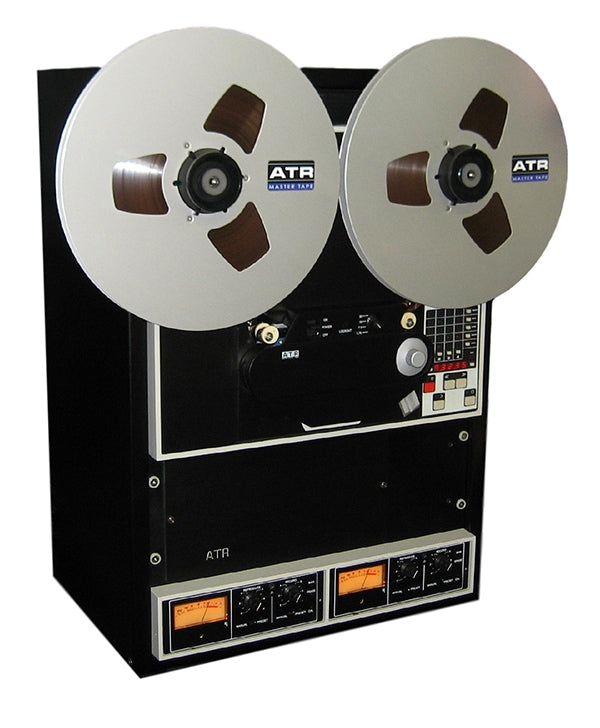
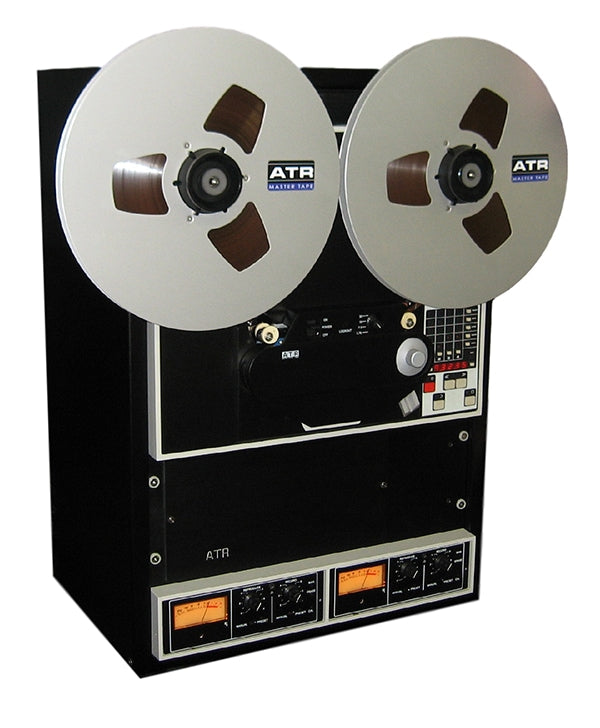
The Giants of Tape, Part Two
Ampex doesn’t really need much of an introduction. It was the company that commercialized magnetic tape recorders in their present form in the United States, after World War II. They developed many good tape machines over the years and also pioneered several advances in magnetic tape formulations. By the 1970s, they were already long established in the recording industry.
They embarked on the design of a new machine, which was to go beyond the established notions of tape transport design. In 1976 they introduced the Ampex ATR-100. Designed by Robert P. Harshberger Jr, Alastair M. Heaslett and Roger R. Sleger, under the management of Frank Santucci, the ATR-100 was a radical departure from what had previously been done by Ampex or other companies in the design of tape machines.
Its most striking feature is the absence of a rubber pinch roller! In most, if not all previously-made tape machines, the pinch roller “pinches” the tape against the rotating capstan and is driven by it. It increases friction, ensuring the tape remains in firm contact with the capstan and does not slip. In doing so, it also mechanically decouples the tape path before the capstan from the tape path after the capstan. Typically, the tension was not constant throughout the duration (playing time) of a reel of tape, but varied depending on the amount of wound tape in each reel. Tension was controlled by a variety and often a combination of means, including spring loaded tensioners, mechanical supply reel braking, electronic supply reel braking, electronic torque control of the takeup reel motor, flywheel rollers, and so on.
By contrast, the ATR-100 has an unusually large diameter capstan, perhaps the largest seen on a tape machine until 1976, at just over 2-3/8 inches OD (outside diameter). Interestingly, this size was intended to be directly related to tape velocity multiples (take the circumference, which is 2πr, where r = radius), to provide 7.5 ips (inches per second) at 60 rpm, 15 ips at 120 rpm, and so on.
The tensioner arms are electromagnetically driven instead of spring-loaded. The idea is to provide constant tension throughout the tape, regardless of the amount of tape wound on each reel. It is still the capstan which controls and regulates tape speed, but the regulation of tape tension is accomplished by electronic means, by active control of the reel motor torque and electromagnetic tensioners.
Does this actually work?
It works very well, as evidenced by the widespread acceptance of the ATR-100 in the industry and the many excellent-sounding albums recorded with it.
The tape heads were made of ferrite and the bias frequency used in recording was 432 kHz, as compared with 100-150 kHz used by most other tape machines in the 1970s. The head assembly could be plugged in and out to change over between 1/4-inch and 1/2-inch tape.
The range of Ampex ATR machines was quickly expanded. The ATR-102 was the stereo version, the ATR-104 was the 4-channel version, the ATR-116 was the 16-track version and the ATR-124 was the 24-track version, the last two intended for multitrack recording.
While Ampex had previously made a preview-head tape machine (the Ampex 300, often used together with Scully disk mastering lathes in the US), which provides the control signals used by the recording pitch and groove depth automation systems of a disk (record) mastering lathe, the ATR-100 was never offered with this option. Instead, the ATR-100 came at a time when a lot of decision makers in the industry had gotten a bit too excited about digital delay lines, which were used in disk mastering installations with the primitive digital delay units available at the time, instead of the good old analog equivalent of the preview head. Since the control signals for the lathe automation systems must arrive in advance of the signal to the cutter head, the digital delay units were delaying the audio signal, not the control signal. So, the audio signal from tape had to undergo an A/D conversion and a subsequent D/A conversion, before being fed to the cutting amplifiers.
This was not a good idea for fidelity.
Doug Sax (the late, well-renowned mastering engineer and one of the founders of Sheffield Lab, along with Lincoln Mayorga, which produced some of the finest direct-to-disk recordings I have ever heard) had expounded his views on this practice in a 1980 interview for Audio magazine, conducted by Gary Stock (the interview can be found here: http://www.magneticfidelity.com/sax.shtml). He felt that the (CD-quality and often higher) sampling rates used in professional-grade digital delay systems at the time were inadequate, producing audible degradation of the sound quality. He believed that sampling rates in excess of 100 kHz would be needed in order to achieve decent fidelity in a digital audio system. It has only taken around 40 years for his views to be reflected by the leading authorities in digital audio, who have finally settled this matter by means of several peer-reviewed papers, published in the Journal of the Audio Engineering Society in a special issue dedicated to high-resolution digital audio: (“High-Resolution Audio: A History and Perspective,” Vol. 67, No. 5, 2019 May).
Some people are a bit ahead of their time. Oh well, better late than never…

The cutting room of the Town House Studio in London, UK. Photo courtesy of Philip Newell, one of the owners at the time.
The legendary Town House studio complex, one of the finest recording and mastering facilities in the UK at the time and, constructed with no expenses spared, had several ATR-100 machines in regular use.
One of these lived in their cutting room, and was the typical digital-delay-line-equipped ATR-102, with 1/4-inch and 1/2-inch head blocks, able to cut from 14-inch reels at up to 30 ips. They had a Neumann VMS 80 disk mastering lathe and their brochure boasted about having the ability to also cut from a 3M Digital Recorder (now entirely obsolete and unlike analog tape, not particularly missed by anyone) as well as direct-to-disk from a live source performing in the studio next door!

The tape copying room of the Town House. Photo courtesy of Philip Newell.
They also had four Ampex ATR-102 machines in their tape copying room, for real-time copying of master tapes. In addition, they had 24 Aiwa 6900 cassette decks for 1-7/8-inch ips cassette tape duplication, from a 1/4-inch tape master playing on one of the ATR-102 machines, or a variety of other sources.

Steve Albini wearing his fashionable pandemic outfit, proudly presenting one of the Ampex ATR-102 machines at Electrical Audio in Chicago, Illinois. Photo courtesy of Greg Norman and Steve Albini.
Electrical Audio, an outstanding recording facility owned by musician/producer/engineer Steve Albini (one of the very few audio engineers who still refuses to use computers for recording and does the entire process on tape instead), has Ampex ATR-100 machines, both in 1/4-inch and 1/2-inch configurations, as their stereo mixdown machines, where the final mixes from 24-track or 16-track multitrack tape are recorded (their multitrack machines are Studer A820).

A custom preview-head tape machine built out if an Ampex ATR-104 machine by Michael Spitz for Sterling Sound. Photo courtesy of Joe Nino-Hernes.
Decades after the introduction of the ATR-100, Michael Spitz converted an ATR-104 into a preview head tape machine for George Marino at Sterling Sound, then one of the major mastering facilities in New York City (now in Nashville, TN). The conversion involved an extension to the machine’s top platform, where an additional reproducing head and a few rollers could be added. The ATR-104 was used as a base, since 4 channels of audio are needed in a stereophonic preview head tape machine; two for the preview/control signals and two for the audio. This machine is still in active service, nowadays used by Ryan Smith and Joe Nino-Hernes at Sterling Sound’s Nashville facility. There was one more custom preview-head ATR-100 machine, of a different design, reportedly used by Stephen Marcussen at Precision Mastering in LA, but it still remains a mystery who put this together.
In the next episode, we will have a look at the rarest, wildest example of an Ampex ATR-100!
Header image: an Ampex ATR-102 sold by ATR Services, Inc.
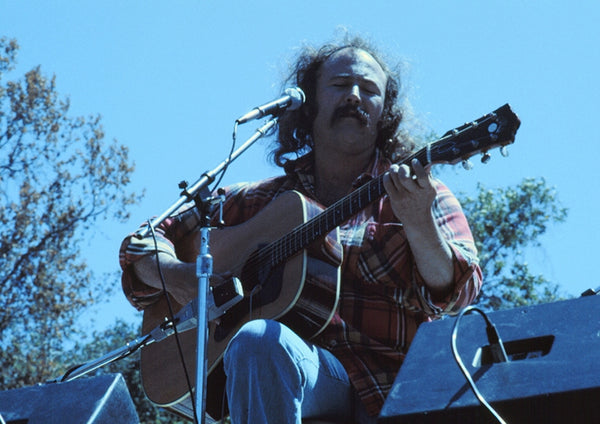
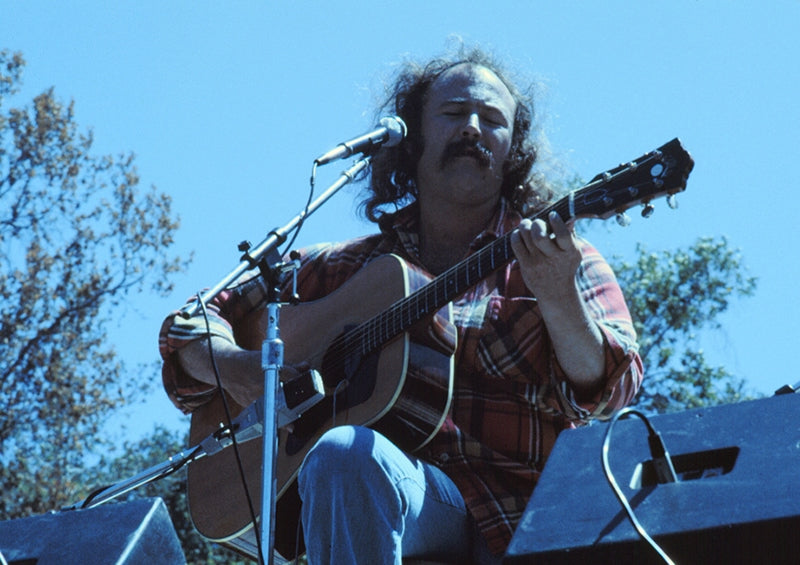
The Marrakesh Express and Other Journeys
We walk into the control room and only record label exec David Geffen and a couple or engineers are there. The playback of “Marrakesh Express” fills the room. It is ten o’clock at night around late 1968 and the studio seems empty, but David says that Crosby, Stills and Nash are in the building. The engineers play back the song over and over, with stops and tweaks here and there.
Wally Heider Studios is in Hollywood proper and the building is nothing much to look at, maybe two stories high, a concrete structure with a parking lot and an entrance in back. Inside it is much nicer; the halls are lined with Gold albums and the control room is large enough to hold approximately 10 to 15 people. There is a big comfy couch and plush chairs along the back wall, and a long, slightly curved control panel with a glass window/wall facing into the dark studios.
Big speakers are over the big window and point downward toward the mixing board and into the control room. On the top of the slanted 12-foot-wide mixing board are some smaller high-end speakers angled toward the engineer and producer’s chairs. The interior of the control room, in fact the whole building, is upscale and purposeful; this is not somebody’s basement studio. We (my sister Ellen the famous rock writer) listen to the tinkering to the recording and after an hour or so we still haven’t seen the rest of the band, so we tell David we are leaving. “No problem,” David said, “I am glad you could come.”
Looking back on that night, it seems like that was a meet, greet and a peek situation. Giving industry insiders access to what musicians are working on in the studio encourages support and creates a sense of involvement. A subtle but important public relations task.
Later in the week Led Zeppelin was headlining the Forum near Los Angeles, and Jethro Tull was the opening act. We were guests of Jethro Tull. The show was awesome. Leader Ian Anderson had a compelling stage presence and musically they were interesting and hypnotic, yet without any stage or lighting effects or costumes. The show was good, different but accessible. Ian’s audience banter was engaging and humorous. They deserved the success that was heading their way (this was before Aqualung was released).
When their set was over, we went to their dressing room to meet them and hang out. Their dressing room was a quiet affair with only a few visitors. That and the lack of drugs and booze kept the excitement level down. I think it was quiet because everyone else was out front watching Led Zeppelin; we hardly watched them and stayed in Ian Anderson’s dressing room for most of Zeppelin’s set. It gave me the chance to talk to Ian and the band, who were quite accessible. I asked if they drank spirits or smoked or had other vices. Ian told me no, nope, and that he and the band was uninterested in such things. They were a humble group and dressed in a ragamuffin hippie style that was decidedly European. I do not think that they even changed clothes before or after going on stage. Stateside – excluding San Francisco hippies – at the time, most people I met had a fashion edge to them. Indian jewelry, bellbottoms, boots, and big collared shirts.
After an hour or so of hanging out with Tull in the dressing room we left. It was just as Led Zeppelin were starting their encores. We stopped to listen and watched what was left of the show from stage left. They were driving the audience crazy; they could have played all night. Jethro Tull’s guitarist Martin Barre was with us and we went out for a bite to eat. He was just like the rest of his bandmates, humble and polite. I would have never guessed that he was destined to be one of rock’s premier guitarists. After we ate, we dropped him off at his hotel.
A few days later Ellen picked me up at my apartment on San Vicente in her rental car and we drove west on Sunset Blvd to Benedict Canyon. A couple of miles in we came to David Crosby’s house. It was just slightly back and up from the road and had parking for three or four cars. The house [I am thinking it was a rental] was a modern light brown two-level wooden affair, with an apartment on the lower floor and open steps to the second floor entrance. David was not home but we were welcomed in and offered tea. I assumed the people there were staff and such.
Maybe three-quarters of an hour later I heard David yelling from outside, saying, “Ellen Sander, you parked your car in my spot!” We both looked out the window and I saw David walking towards the house. He looked like a lion as he walked away from his car, a Pontiac Grand Prix. I thought he was angry, but Ellen just laughed. I also thought his choice of cars was unusual for a rock star, but then I thought his rock star car was probably in the shop and this was a rental.
David came in and he was very nice, and we all hung out for a bit. He must run an errand, but he told us to stay, he’ll be right back, so we made ourselves at home. It got dark and someone started a fire. We were hanging in the living room when Peter Tork (of the Monkees) came up and joined us. Peter was living in the apartment below because he was going through a divorce and his soon to be ex-wife had the house. He and David were good friends from way back.
We were hanging out and the director (or maybe the manager) of the Firesign Theater, a heavyset guy with a full beard, came by to see David, saying that David was expecting him. We invited him in and told him David wasn’t there but would be right back, so this guy sat down and pulled out some party favors and the four of us sat around the table and had a good time. This went on for a few hours and he kept asking when David would be back. It started getting late and he was growing impatient, asking, “where is David?” with increasing frequency. Around midnight he finally left and a few minutes later Peter went downstairs to his place. Ellen and I dozed on the couch and we left just before sunrise. David never did come home that night.
******
We drove out to the Pacific Coast Highway and headed north, enjoying the sun coming up over the Pacific. We passed this beautiful white sand dune that seemed to go up about 800 feet with a very steep incline. I said, “let’s climb up as far as we can and jump and roll down.” We took off our shoes and socks got about a quarter of the way up and we were huffing and puffing trying to catch our breath. Then we started running downhill and jumping. Because of the incline we made tremendous jumps (about 15 feet) and when we landed our feet would sink into the sand up to our calves, or we’d roll downhill.

We got back into the car and continued till we saw a diner. We were starved and decided to have breakfast. We went in and everyone turned and looked at me. It was still early, before 7 am, and the diner was packed with middle-aged working people and long-haul trucker. Oh man, did I look different and out of place in my big-collared shirt and bell bottoms and big hair. This was one of the rare times in my life when I felt self-conscious. Then again, it might have been the sobering glare of the harsh early morning sun. After giving us the once-over, the diners returned to their food.
After breakfast we drove back towards Los Angeles. Ellen dropped me off at my apartment on San Vicente and I went straight to bed. Exhausted, I slept till early the next morning, when I was awakened by my friend, (the late) Barry Byrens, banging on my door. He needed a favor. He asked me to drive him to the LA Free Clinic and drop him off. He did not want to park his fancy Lincoln in their parking lot. His reasoning is that he would appear to be too financially well-off to avail himself of their services. “What is wrong?” I asked. He said, “I have a burning sensation down…you know where.” I got dressed and drive him to the clinic, they gave him a shot and sent a sample smear to the lab.
Three days later I was up at Barry’s house on St. Ives and the phone rang. It was the Free Clinic. They had gotten the results of his test back from the lab. Barry put the call on speaker. “You have an infection,” the male nurse said, and Barry answered, “I knew I should have not gone to the bathroom at the Rainbow Bar and Grill. The men’s room was dirty.” The nurse replied, “you can’t get it that way,” and Barry said, “sure you can, that’s what happened.” The nurse then said it was important for him to notify anyone he’d had contact with. Barry answered, “there is no one to notify unless you want me to call the Rainbow and tell ’em.” This went back and forth for about 10 minutes and the nurse was beside himself in frustration, in part because Barry was so serious and adamant about his theory.
About seven years later I was back in Los Angeles for a few weeks on business and was staying at Barry’s house. He had sold one of the first cellphones to Guy Williams, the actor who played Zorro in the original TV series. The problem was, he could not get a signal to make a call. Barry put him on speaker. Zorro was upset. I made the slashing “Z” sign and sound; Barry hushed me up. Maybe there were 40 cell phones in Beverly Hills at the time. Beverly Hills is like a bunch of high school kids with money. They must have everything first. However, unbeknownst to these early adopters, there was only one cell tower in all of Beverly Hills.
Barry was very interested in consumer electronics and he attended the very first CES. He was into home alarm systems and then in the ’70s was an early retailer for cell phones. Barry is responsible for my involvement in this exciting industry.
The next time I saw David Crosby was decades later at a Consumer Electronics Show in Las Vegas, where David did a lunchtime concert with his son in the main hall.
Header image of David Crosby courtesy of Wikimedia Commons/David Gans.
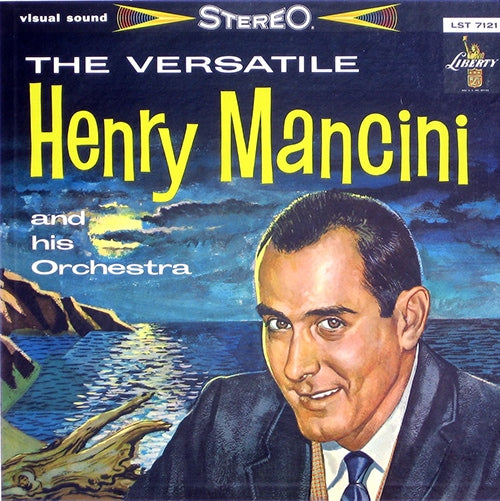
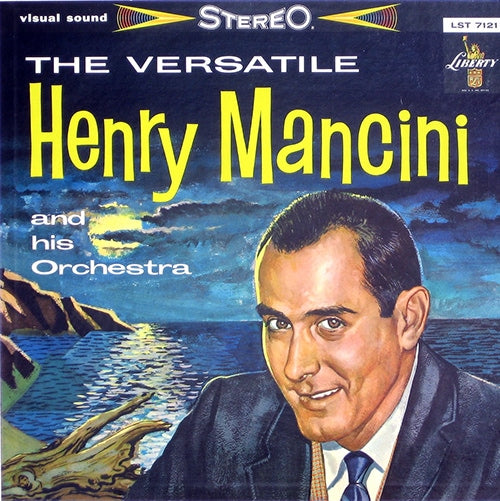
The Jazz Side of Henry Mancini, Part One
Among the first records I played as a toddler were a handful of albums by composer Henry Mancini. My nightly ritual was to stand next to the upright Admiral console in our basement and load up the changer, and two of the couple dozen or so favorite records of mine were the soundtracks to the films The Pink Panther and Charade. Back then, most of the basement records were monaural, but at that age I didn’t really care – it was music.
Digging through some of the boxes of records in the basement, I found a few others I took a liking to, like the soundtrack to Breakfast at Tiffany’s, Mr. Lucky Goes Latin, and a record that, to this day, I swear I did not scratch – The Latin Sound of Henry Mancini. We got our stereo Magnavox console when I was around the age of five or six, and a few years later I discovered the folks had bought Uniquely Mancini and Several Hours Past Sunset, the latter being one of Hank’s piano albums…yet I never heard them play either one.
At some point in the journey, my mother’s aunt gave me her old VM Triomatic console, and a handful of records. Three of them were Mancini albums: The Music from Peter Gunn, More Music from Peter Gunn, and Mr. Lucky, all three being the soundtracks to television series circa 1960. A fourth was another cool RCA big band album by the Stanley Wilson Orchestra: The Music from ‘M Squad’; Mancini had set the cop/detective music ball rolling and popularity of that sub-genre soared.
As I got a little older, I’d end up buying a few Mancini records myself or getting some as gifts, and had everything from cop show theme albums and another Pink Panther soundtrack to Mancini’s take on country music, and two records he did with Doc Severinsen. Once I had gotten settled in life, I started filling in a lot of holes in my Mancini collection via used record stores – I have most of his albums now, with the important late ’50s to late ’60s albums on RCA Victor completely represented. Many of those are original Living Stereo releases, which cover the albums from 1959’s Peter Gunn to 1963’s Our Man in Hollywood and have exemplary sound quality. Even the Dynagroove releases in the mid 60s have some gems among them.
Overall, Mancini’s catalog is a wide assortment of musical styles, yet many would write all of Hank’s music off as orchestral fluff, or “old fogey music” (as my classmates may have called it). One style that really interested me was the jazz side of Henry Mancini.
According to his autobiography Did They Mention The Music?, when Hank was hired to write the musical soundtrack to the Peter Gunn television series, he had no intentions of recording an album. RCA approached Shorty Rogers to record the music from the series, but Rogers insisted that Hank record it himself. Which he did, to good effect, on what would be his first of many albums for RCA Victor. Back in the 1950s, Shorty’s jazz albums were considered good sellers at around 80,000 copies each; The Music from Peter Gunn sold over one million! Demand was so high at one point that RCA ran out of album jackets, and had to issue some of those records within a “house” generic jacket.
Mancini’s score was purely in the jazz idiom, although his twist to a traditional big band lineup of trumpets, trombones and saxophones (who doubled on flute) was to augment it with French horns, as heard on the following track, “Dreamsville,” one of his most recognized tunes.
Mancini’s group on record featured the cream of the crop of West Coast jazz musicians. And his writing could create tension, starting with a walking bass and alto flute, slowly adding instruments until reaching a dynamic conclusion. The following theme opened each episode, prior to the familiar “Peter Gunn” theme we know all too well. Here is “Fallout.”
Mancini had the ability to capture the mood of a scene, from a smoky nightclub vibe that copies the shimmering guitar/vibraphone/piano sound of George Shearing in “Soft Sounds”…
…to the whimsical “Timothy” (from More Music from Peter Gunn) utilizing piccolos carrying the melody and cup-muted trombones doing an “oompah” accompaniment:
Mancini also had a knack for placing familiar instruments into unfamiliar settings. This cut from the album Combo! finds the Bobby Timmons tune “Moanin’” led by a harpsichord. I should point out that the harpsichord and piano player on this album (and other Mancini recordings from this era) went on to some soundtrack fame himself. Jazzing up the harpsichord here is none other than John Williams.
A flute player himself, Hank was instrumental in bringing some popularity to the bass flute. On his Grammy-winning album with a large jazz ensemble, here is “The Blues,” from The Blues and The Beat, the bass flutes setting the ominous tone before the full band joins in on the melody.
In 1961, Blake Edwards would again hire Mancini, this time to pen a soundtrack for the film Breakfast at Tiffany’s. Based in New York City, the film’s soundtrack has a cosmopolitan twist to it, and would include a tune eventually covered by dozens if not hundreds of others: “Moon River,” featuring the lyrics of Johnny Mercer. The album has a mix of strings, vocals and jazz horns, but that doesn’t mean is lacks some good jazz charts. “The Big Blow Out” was a tune used by Holly Golightly (Audrey Hepburn) to drown out the sound of one of her love interests pounding at the door, and it’s a proper jazz blow-out:
After one of her romantic fallouts, she and Paul “Fred Baby” Varjak (George Peppard) attend a strip club, where the amusingly-named tune “Hub Caps and Tail Lights” could be descriptive of the activity on the stage. “Do you think she is handsomely paid?” Hank pours the burlesque into this one, using a baritone sax to lead the melody, appropriate “stripper” drumming, and the tack piano to set a great mood here.
Next issue, we’ll continue featuring more of Mancini’s jazz works following this film, including an album that to me, epitomizes the best of his big band talents. Stay tuned!




